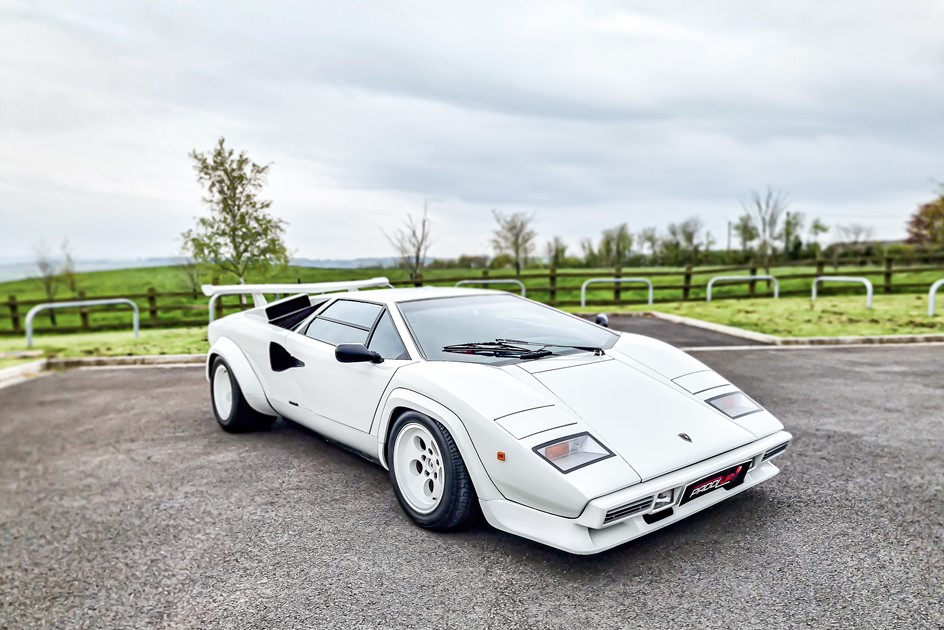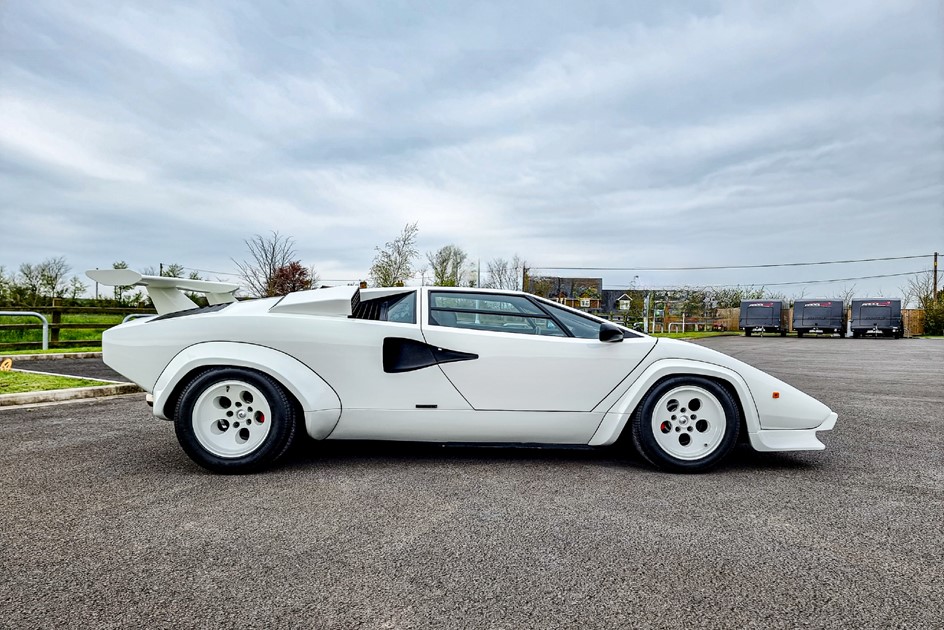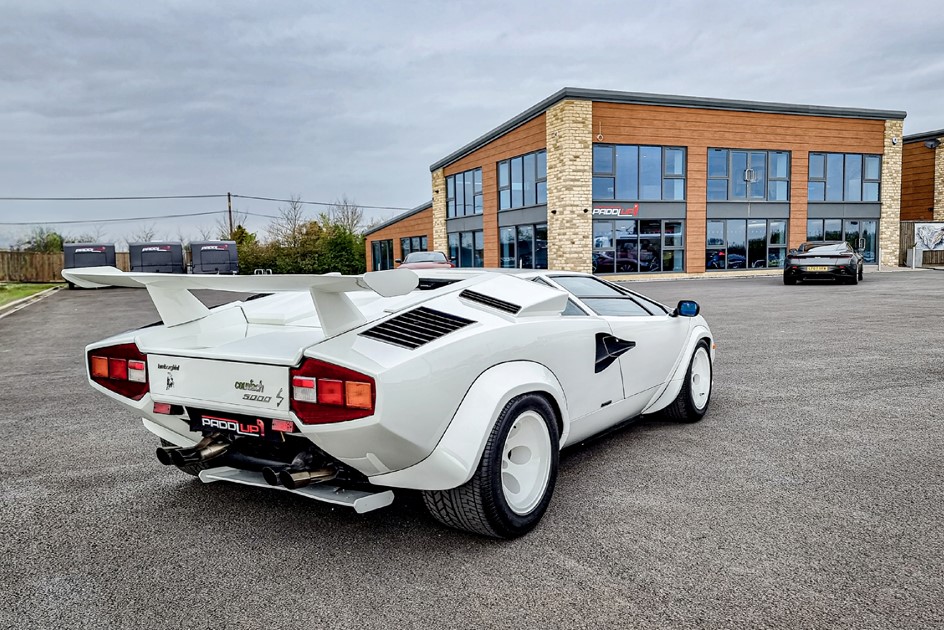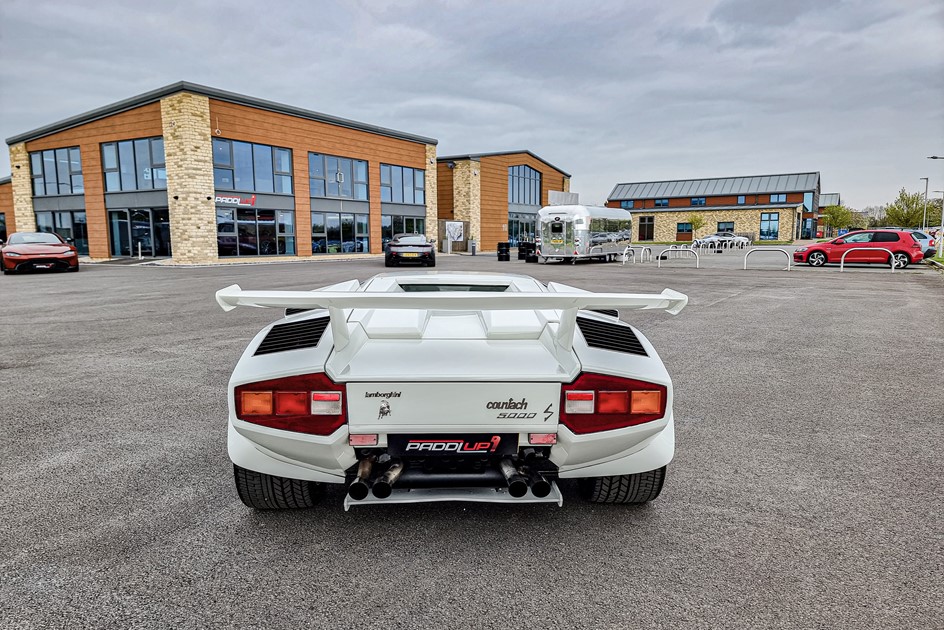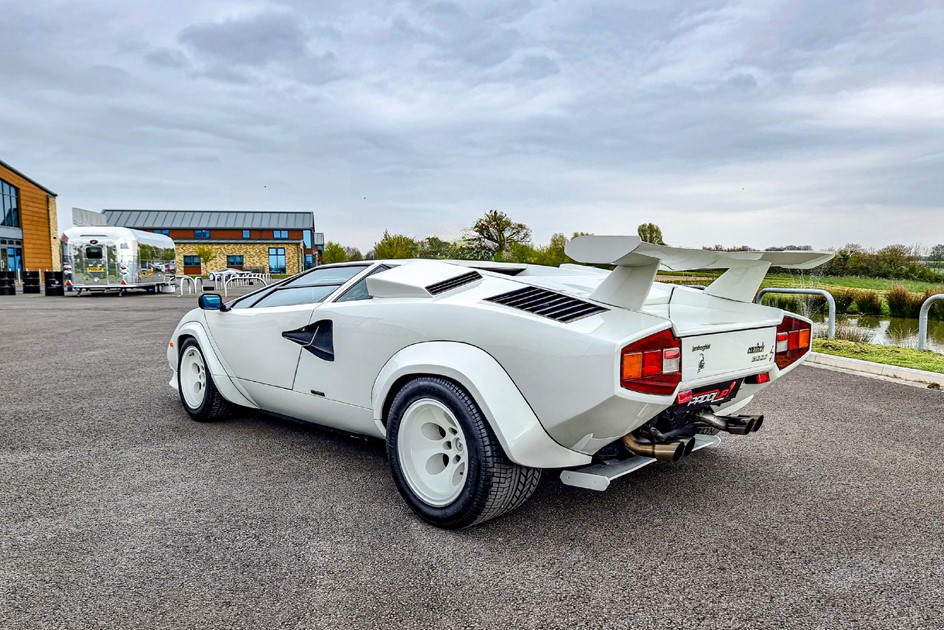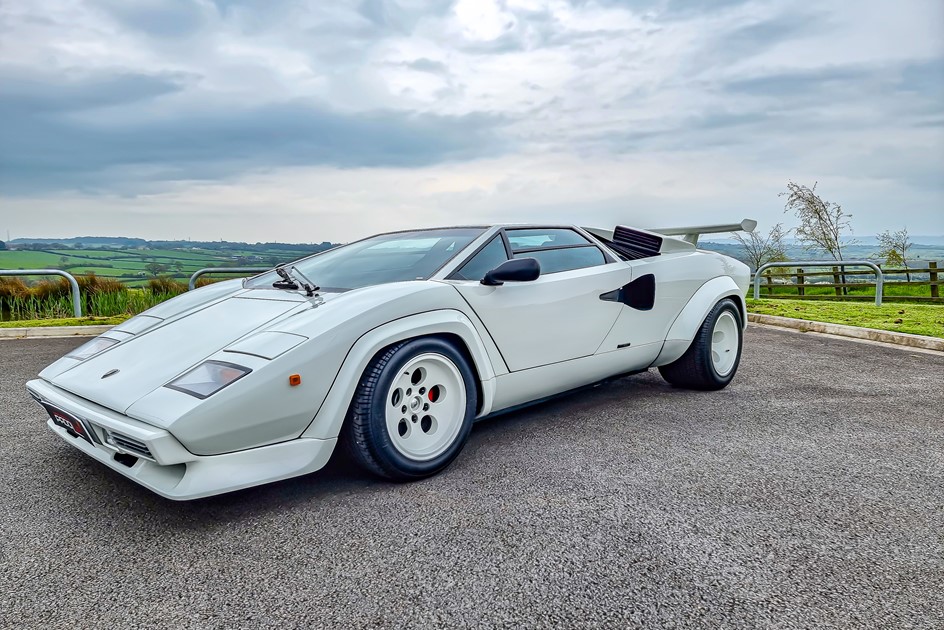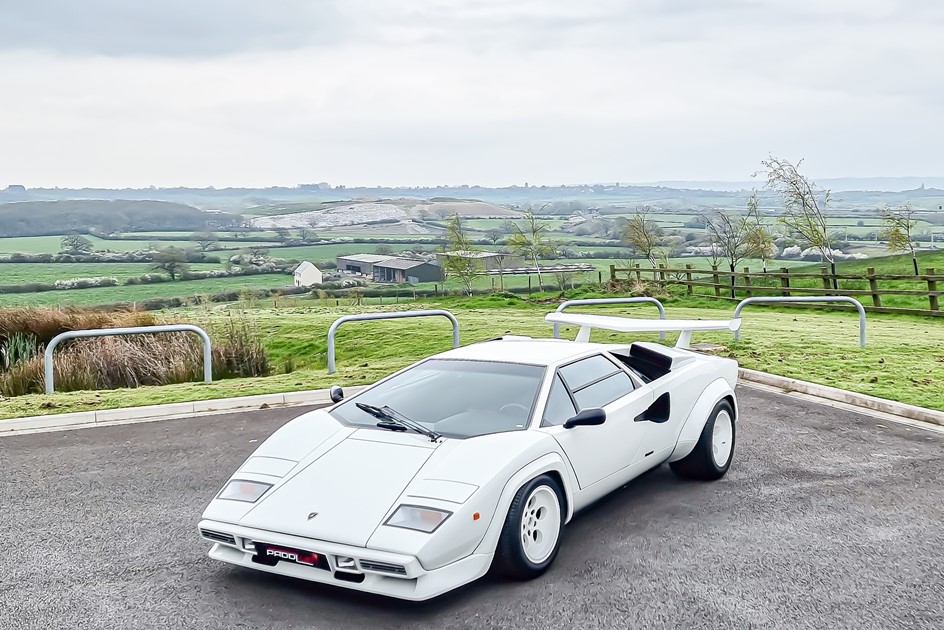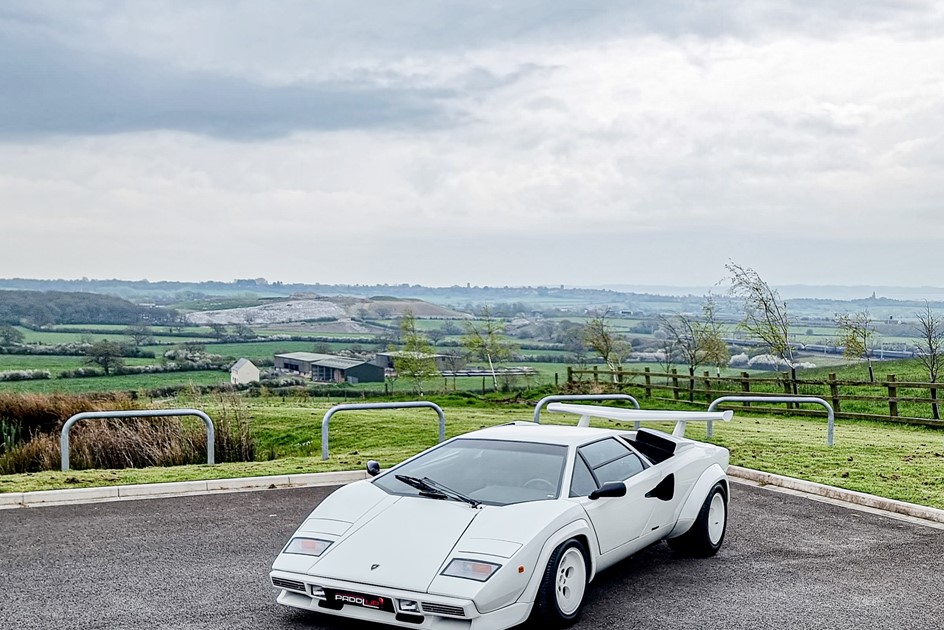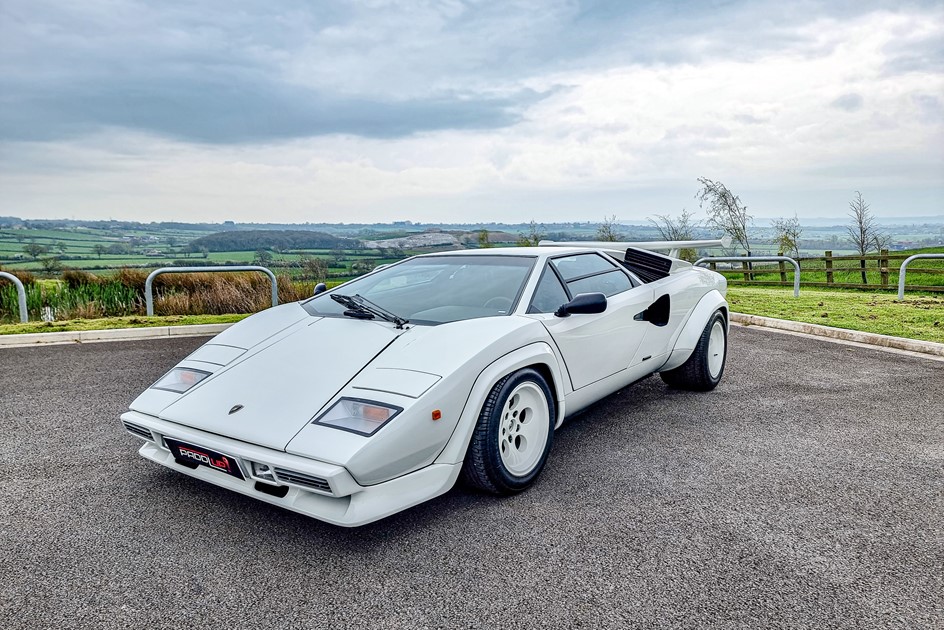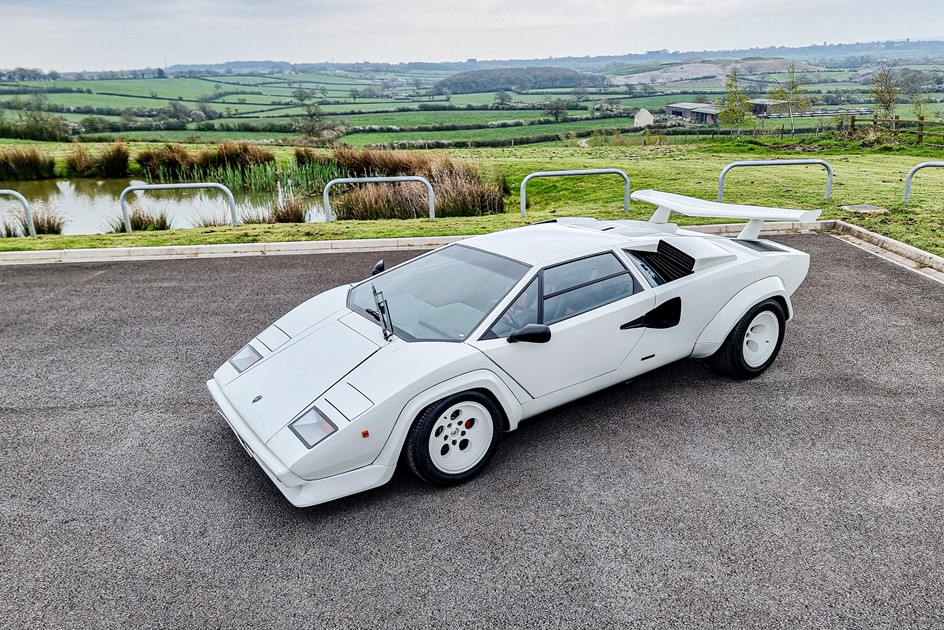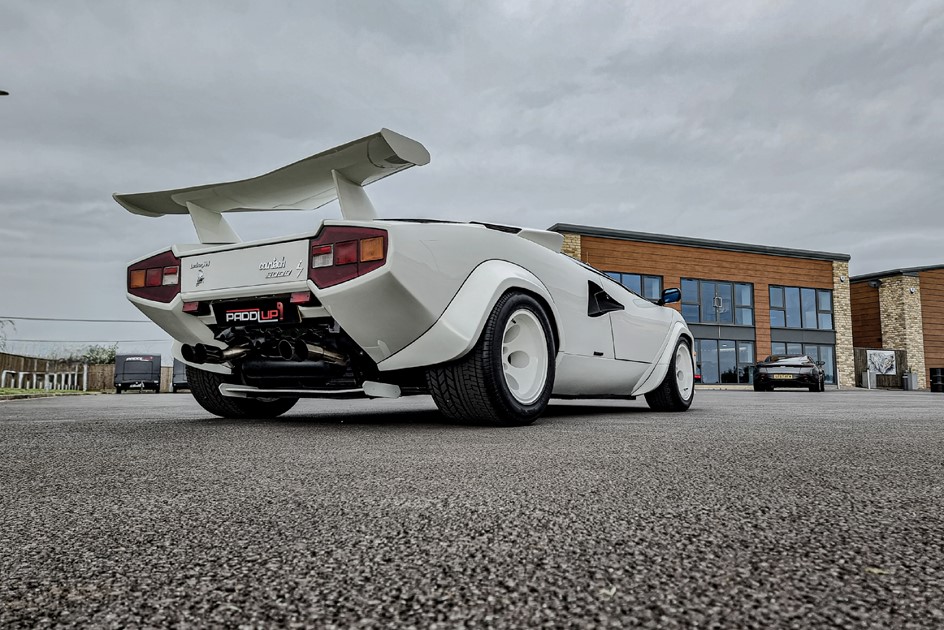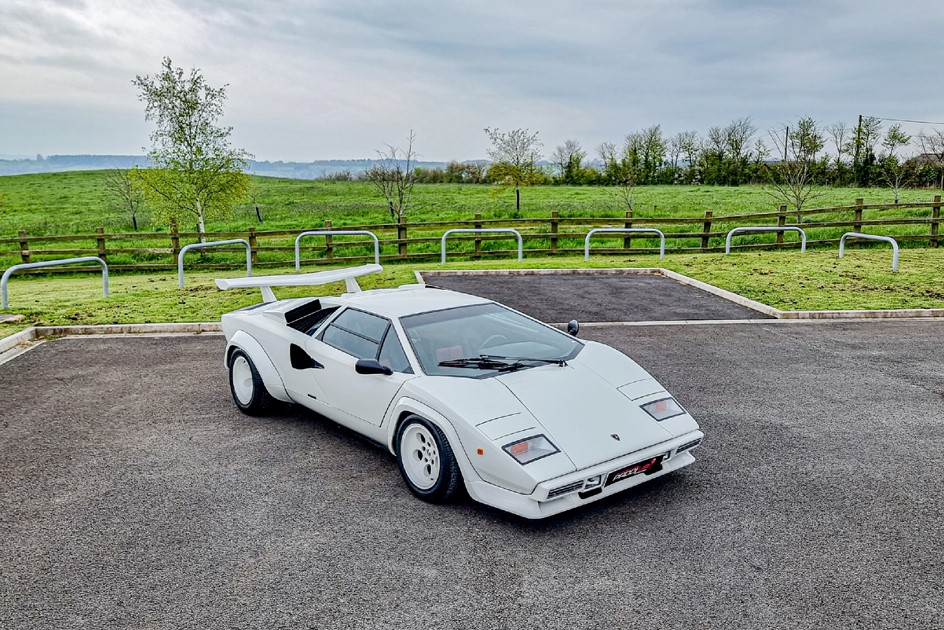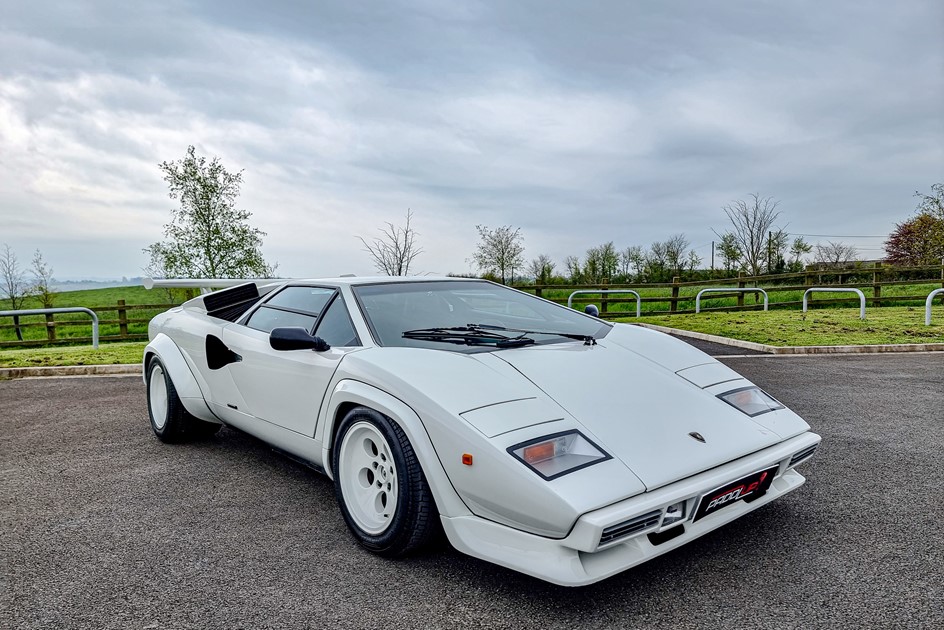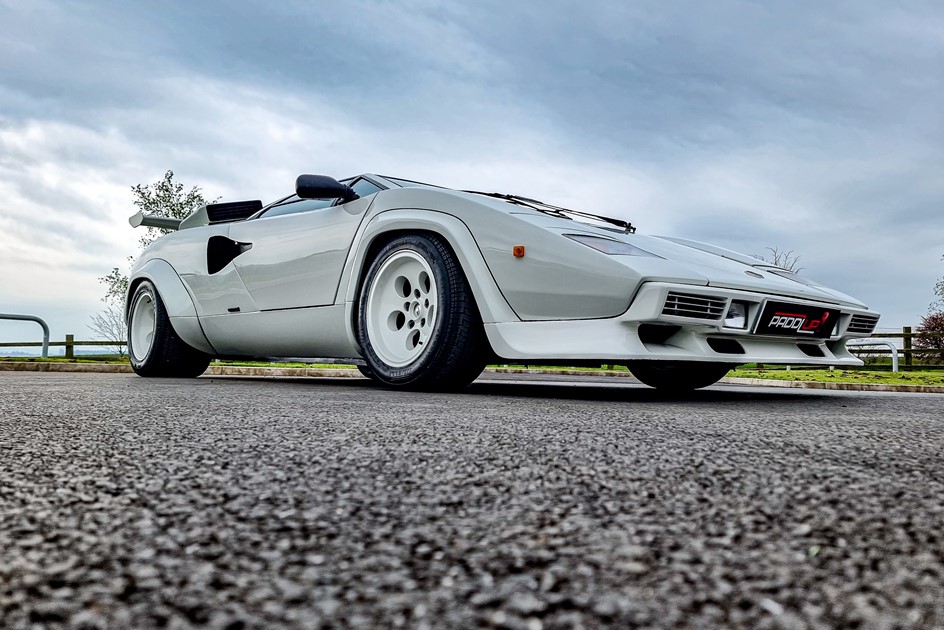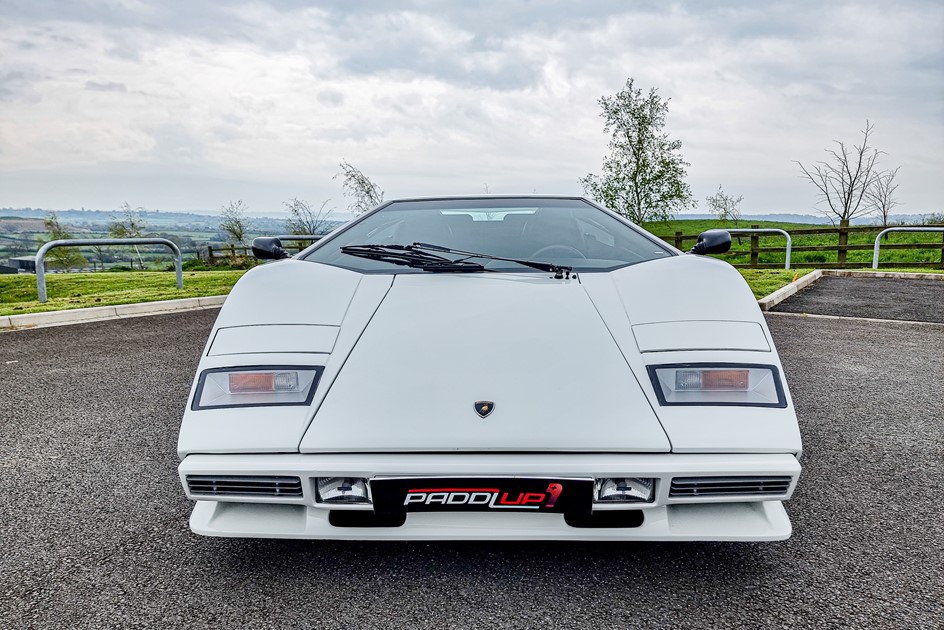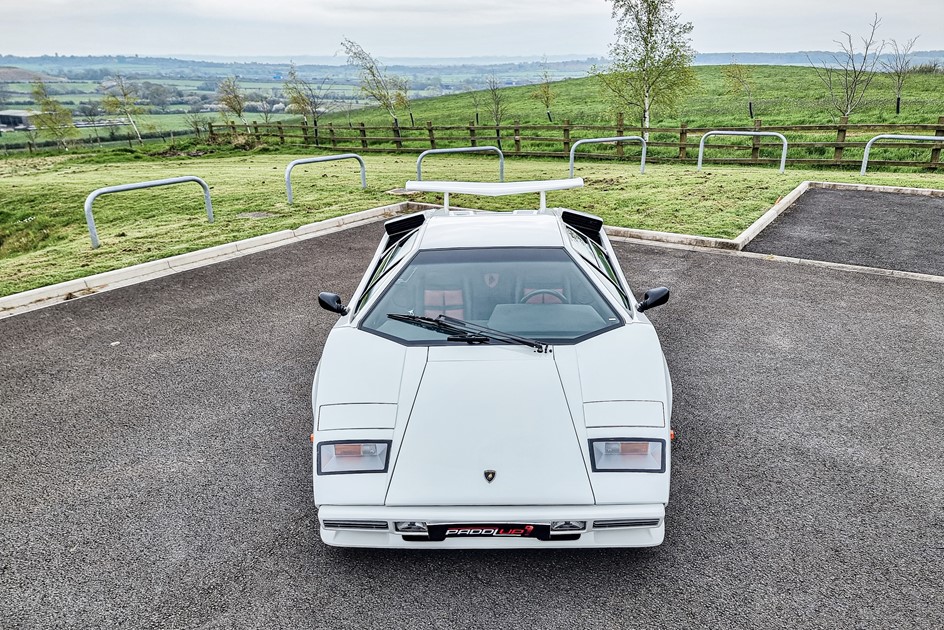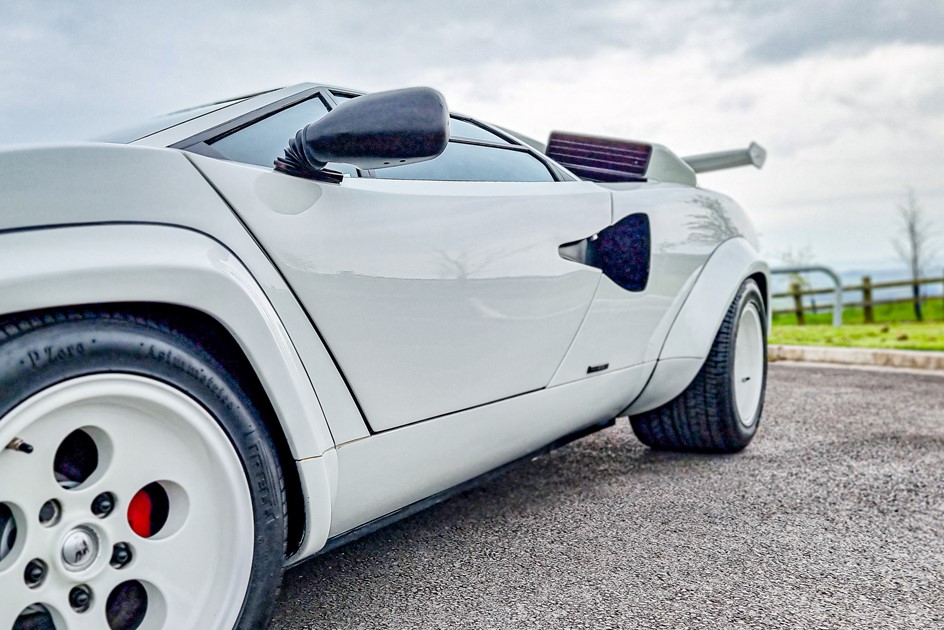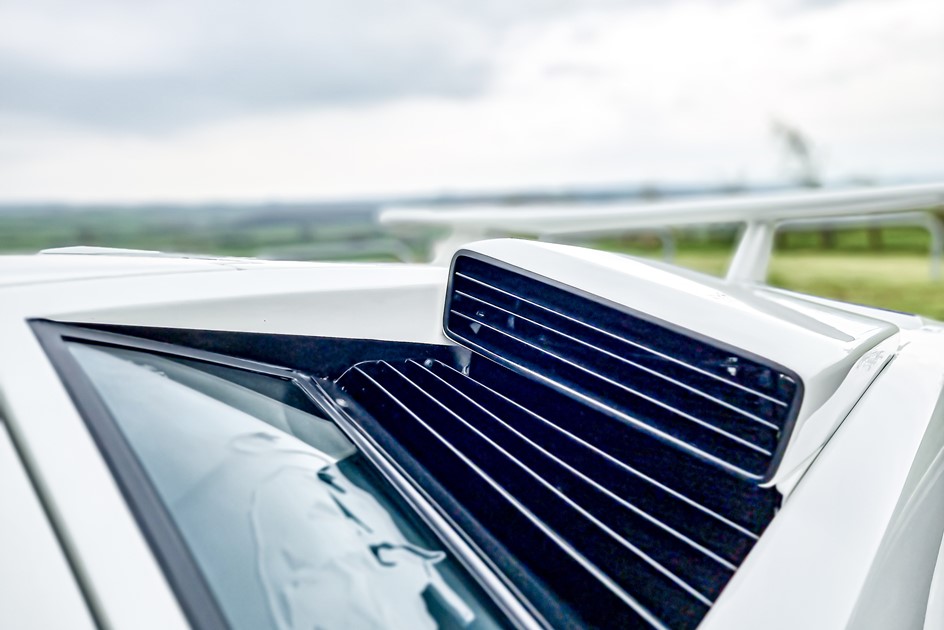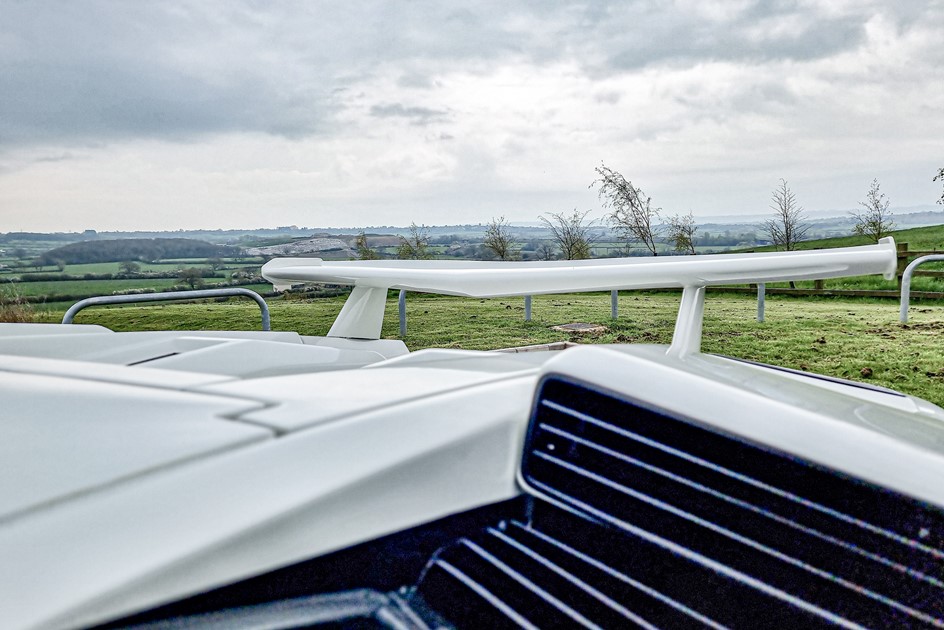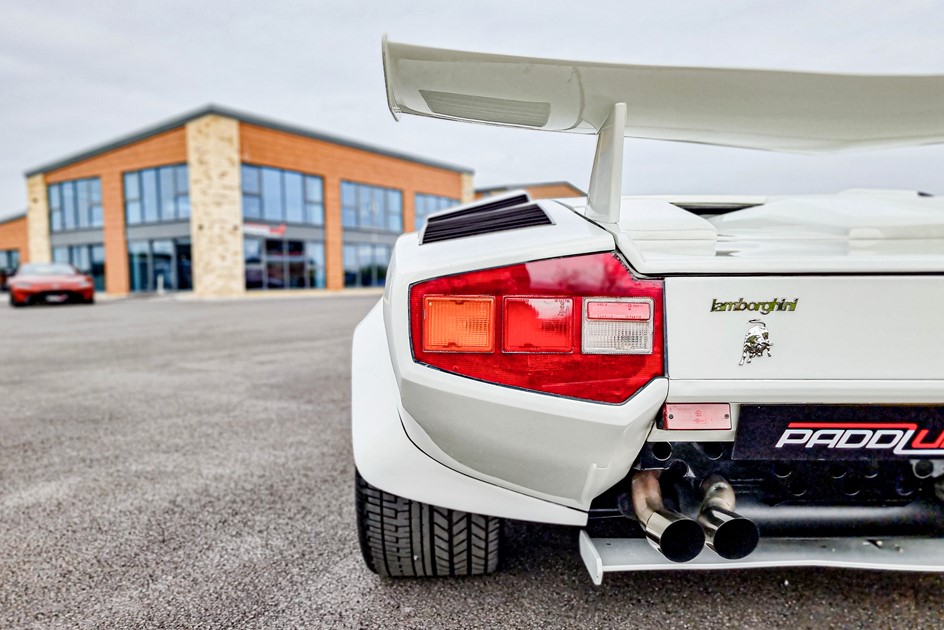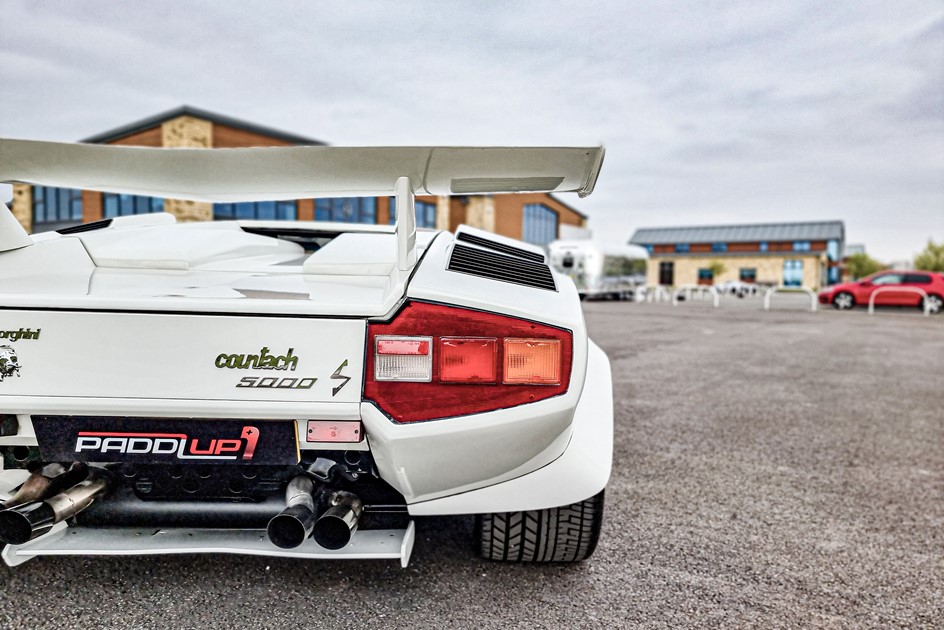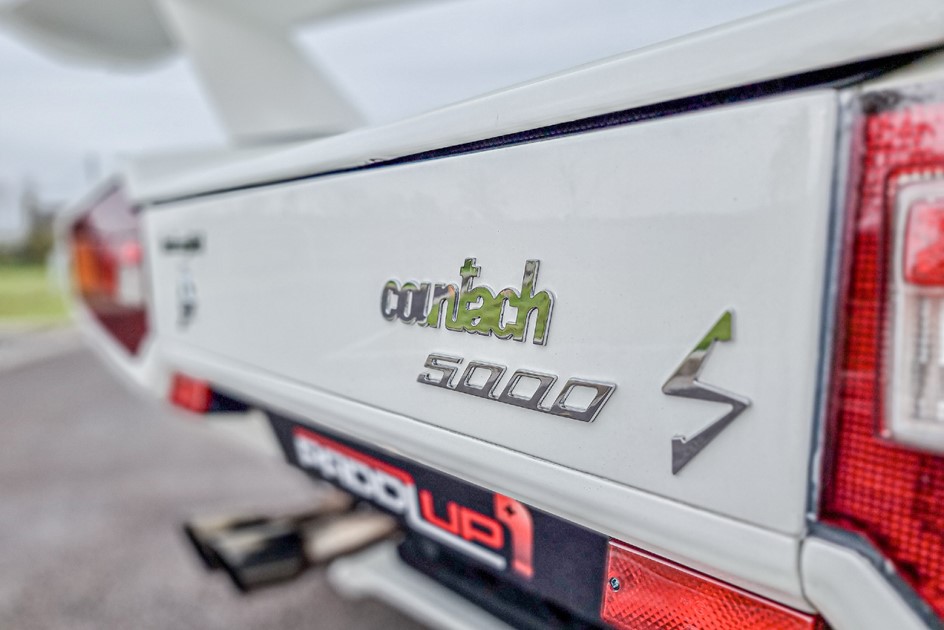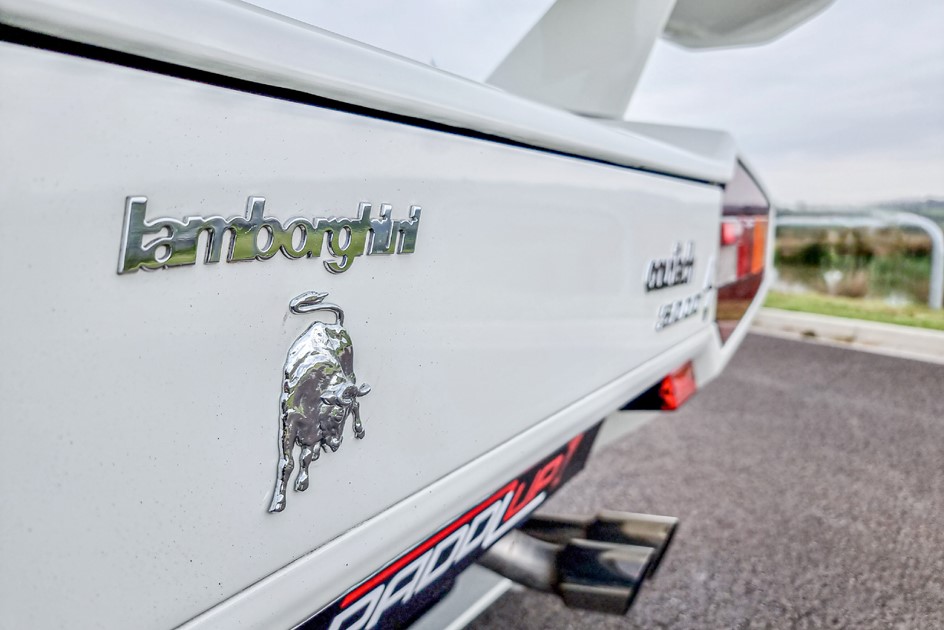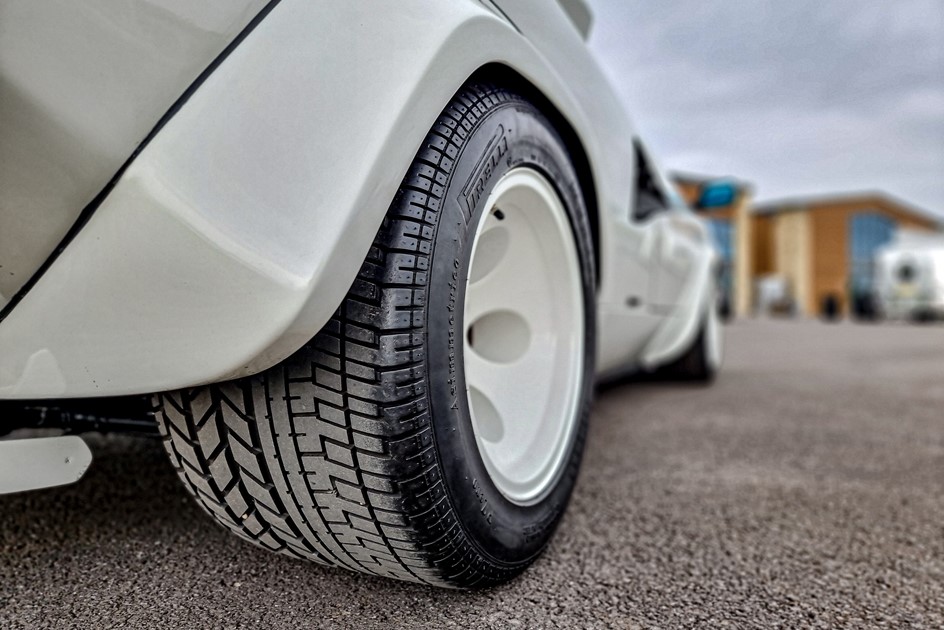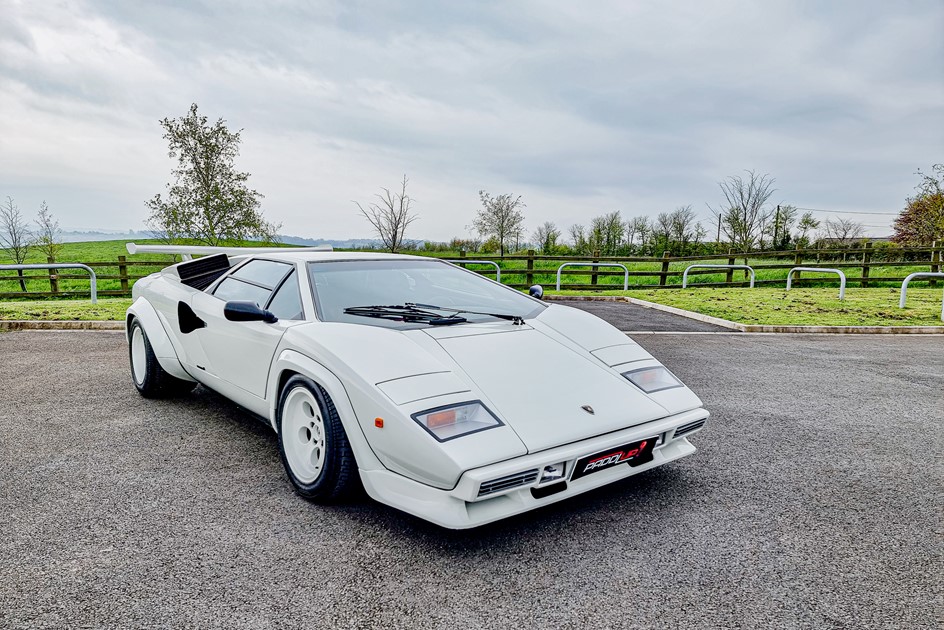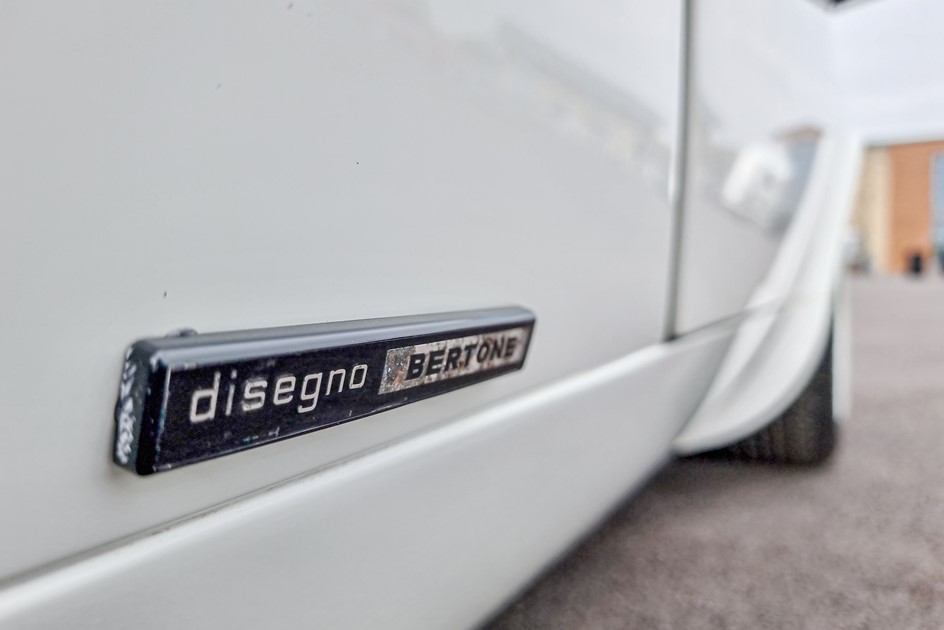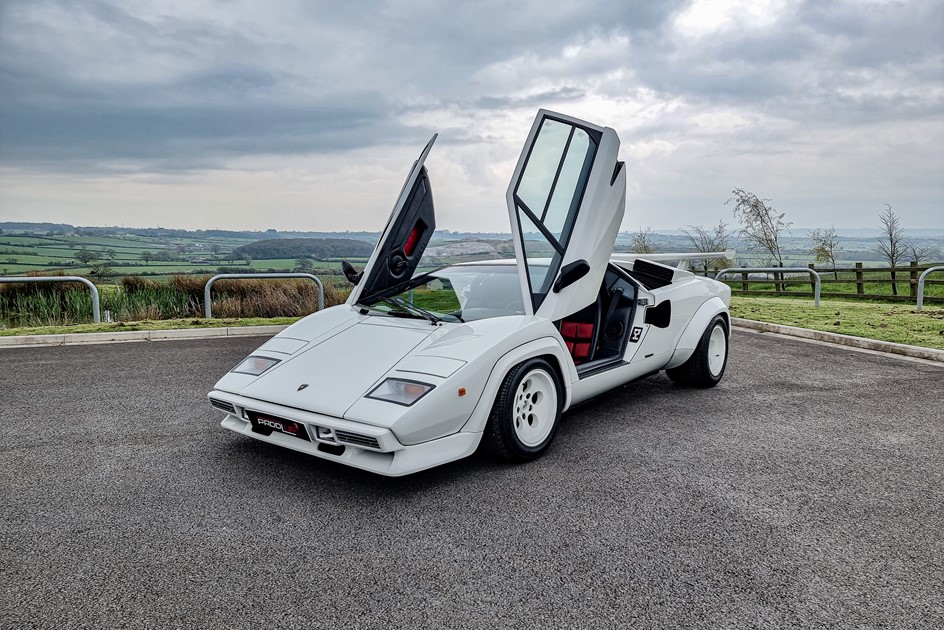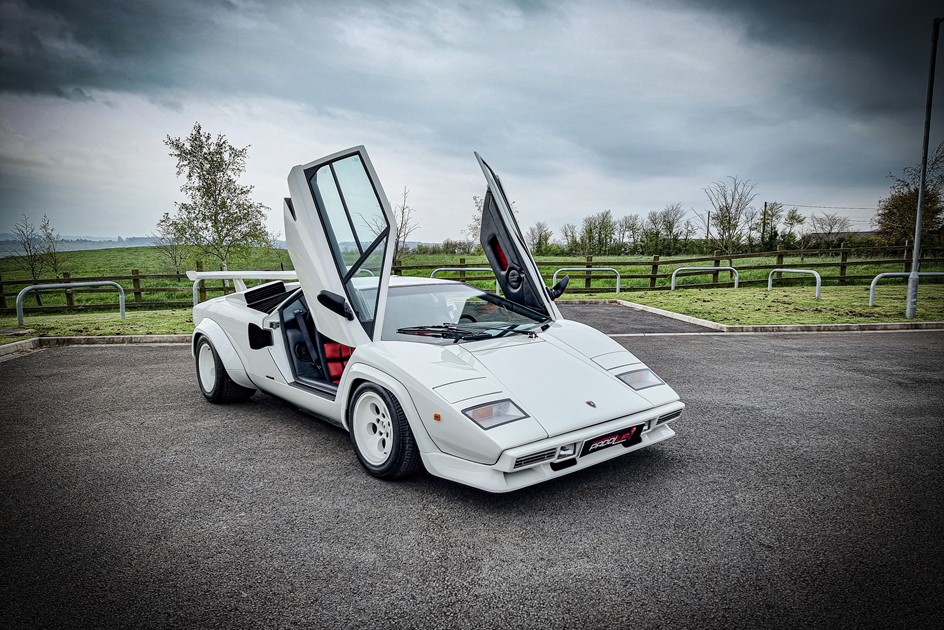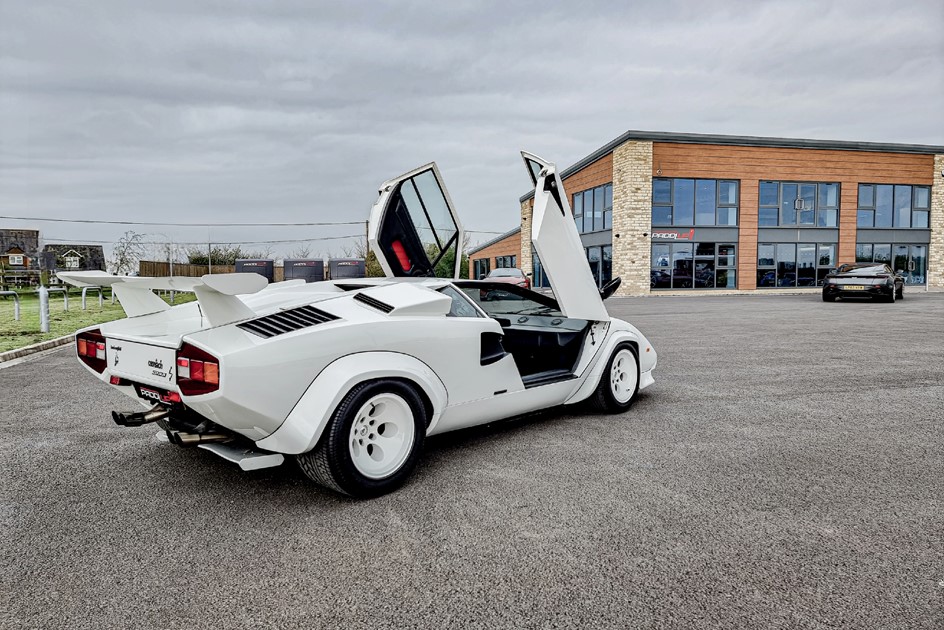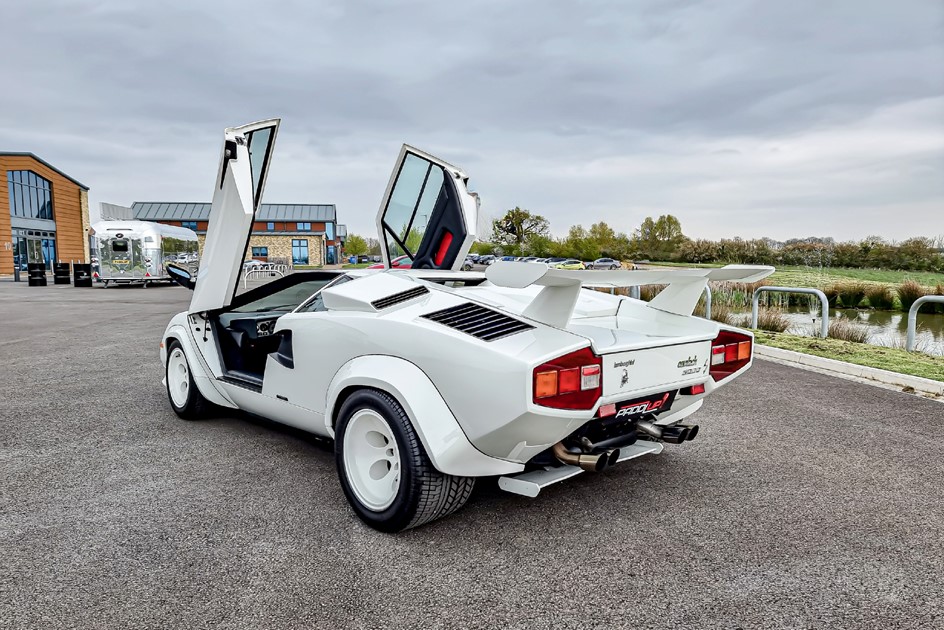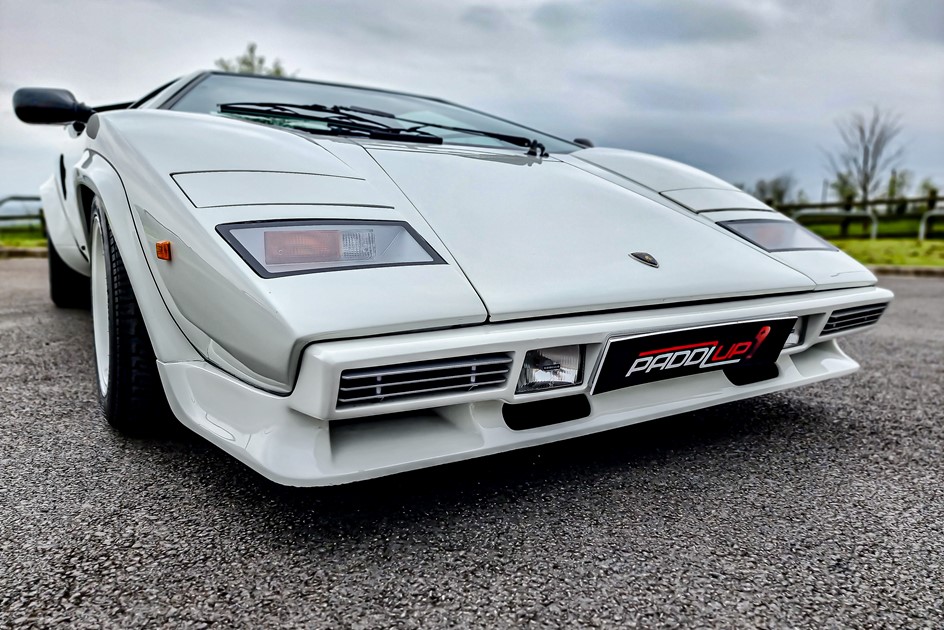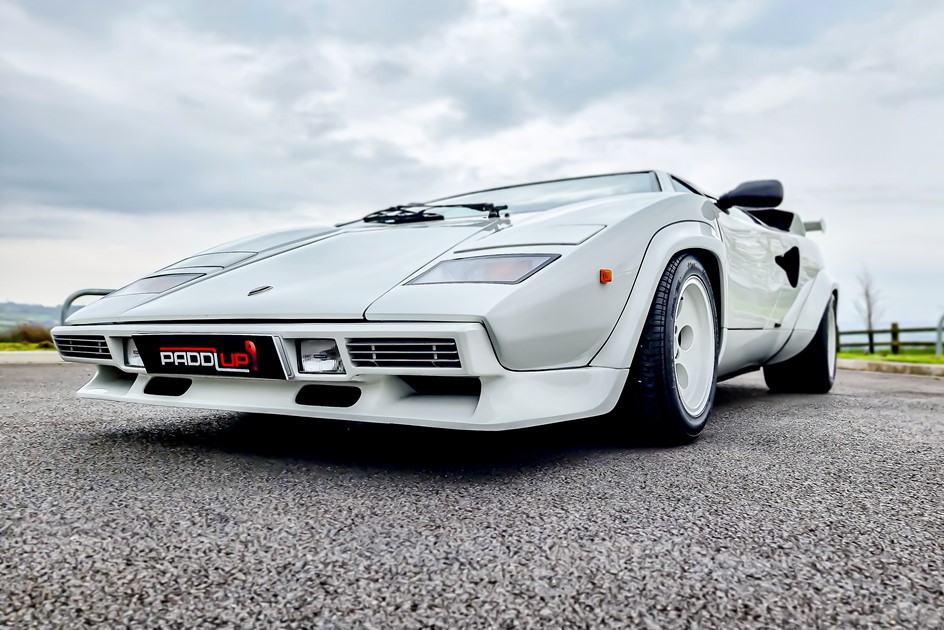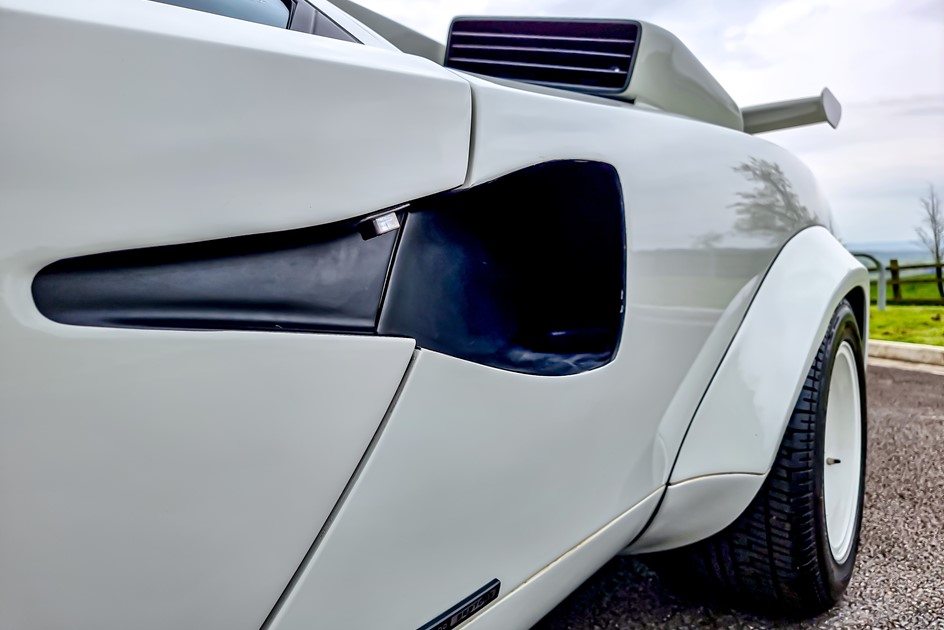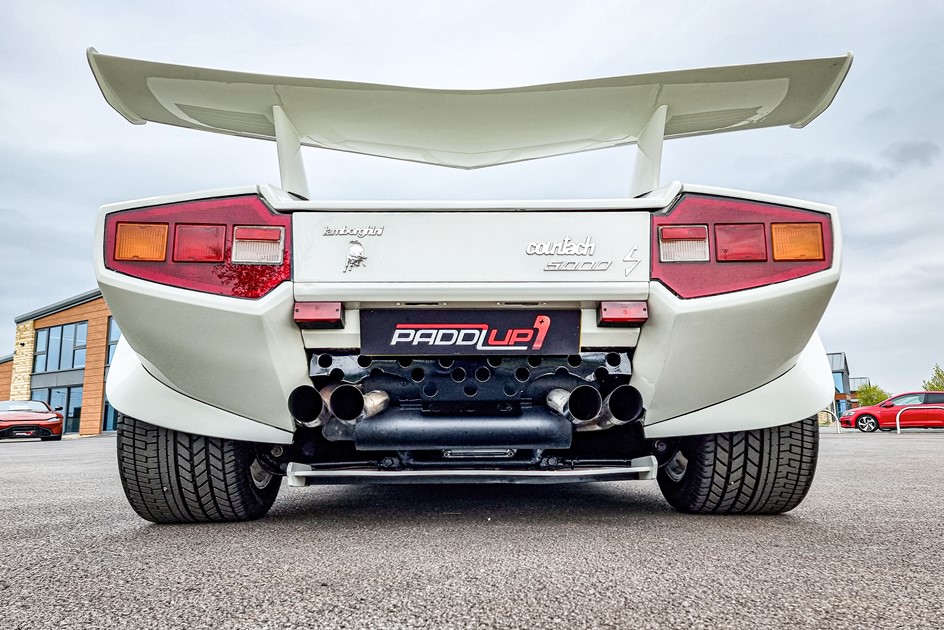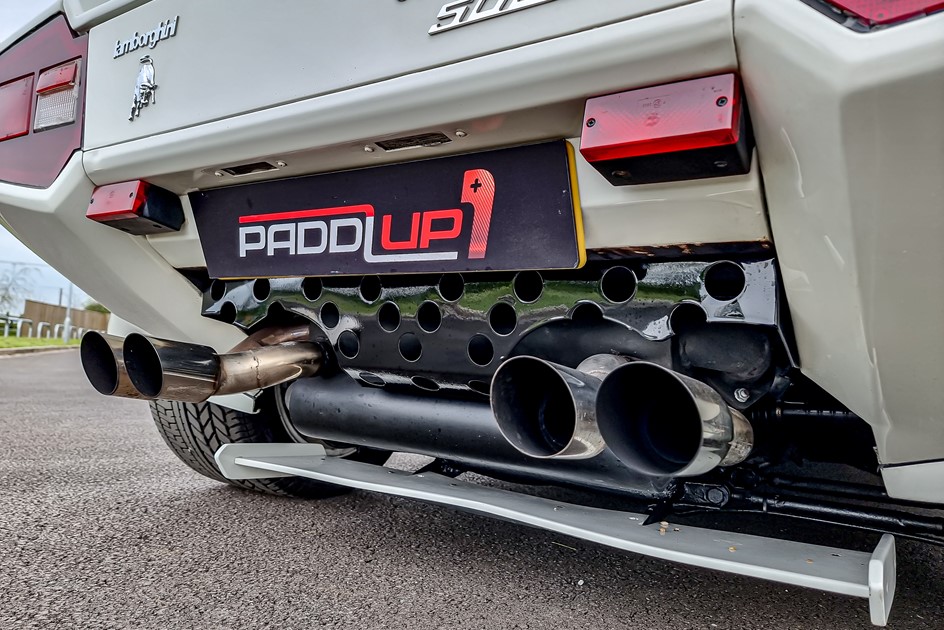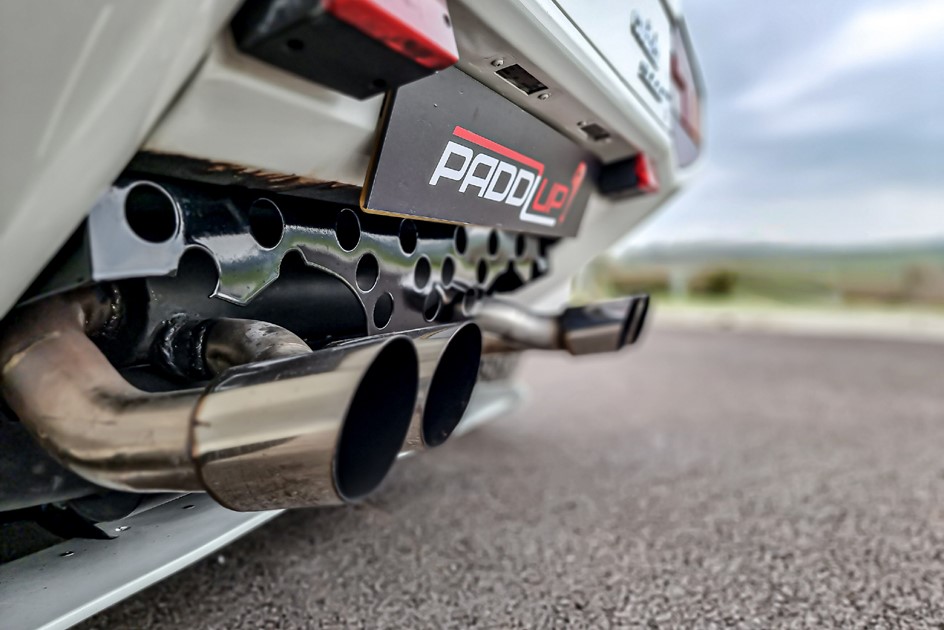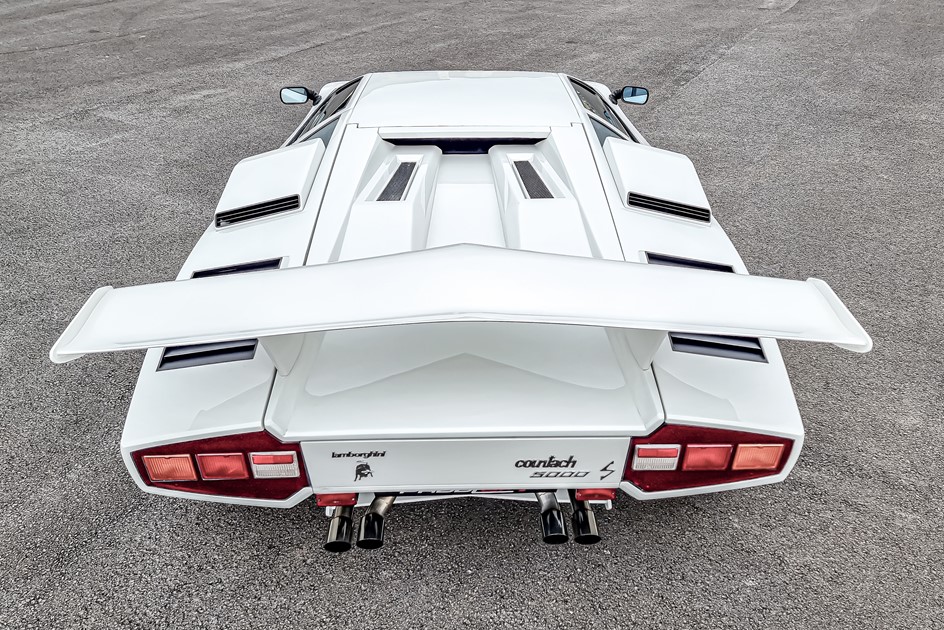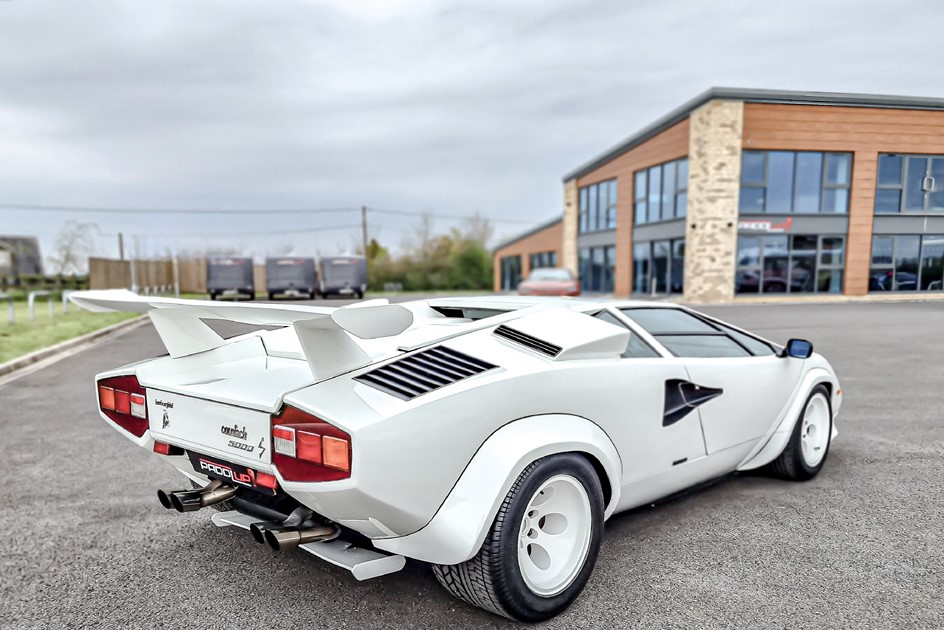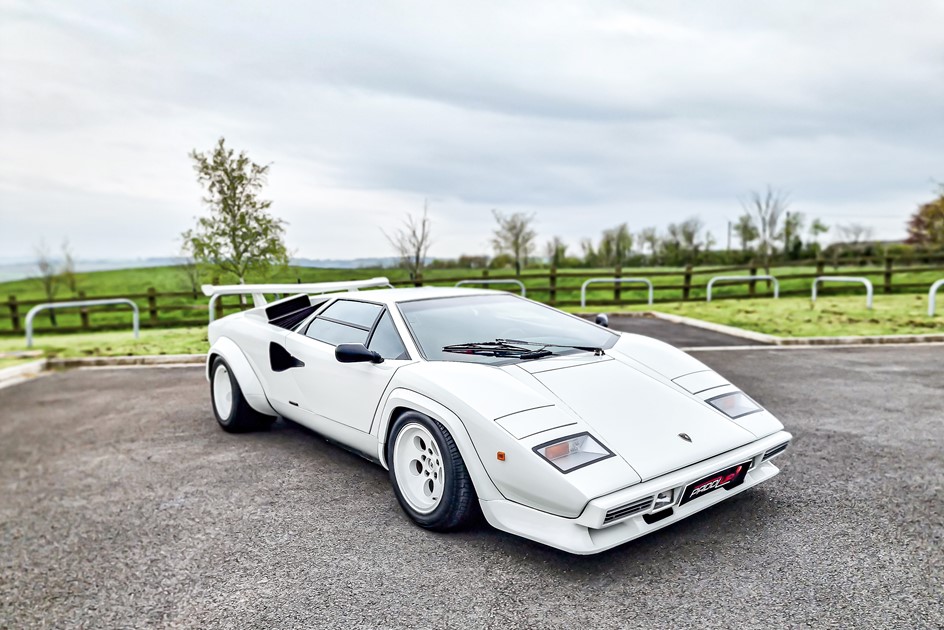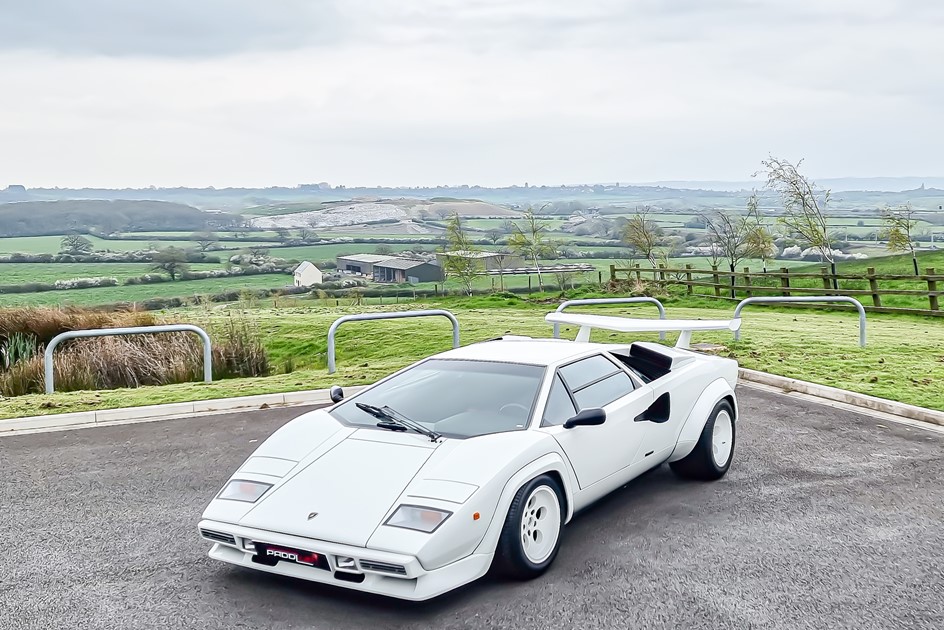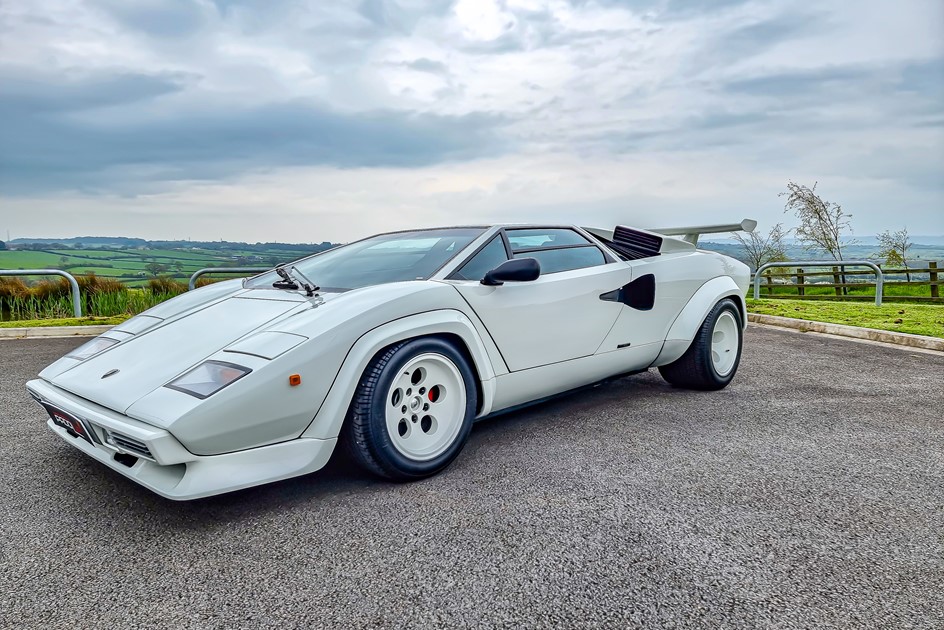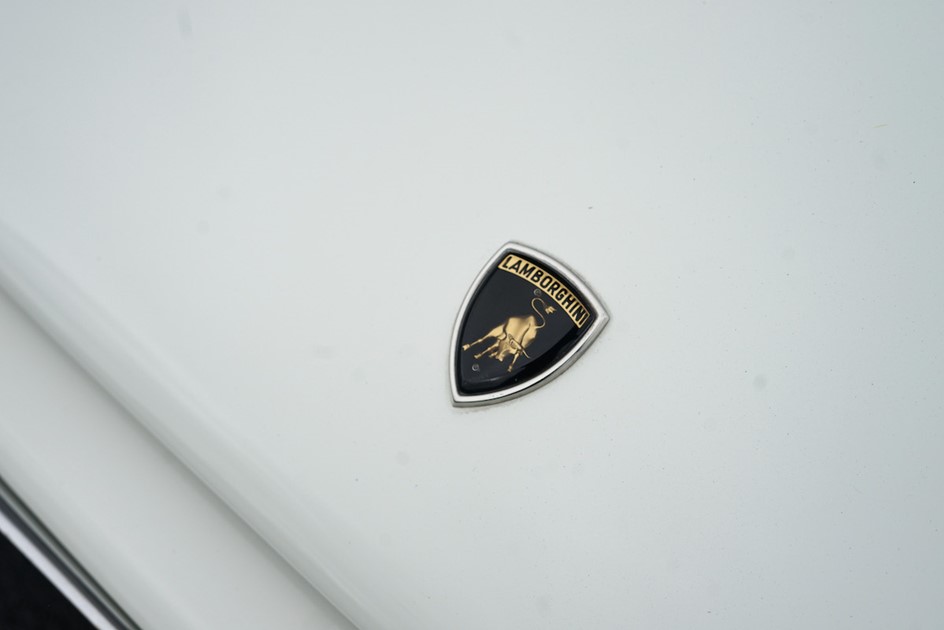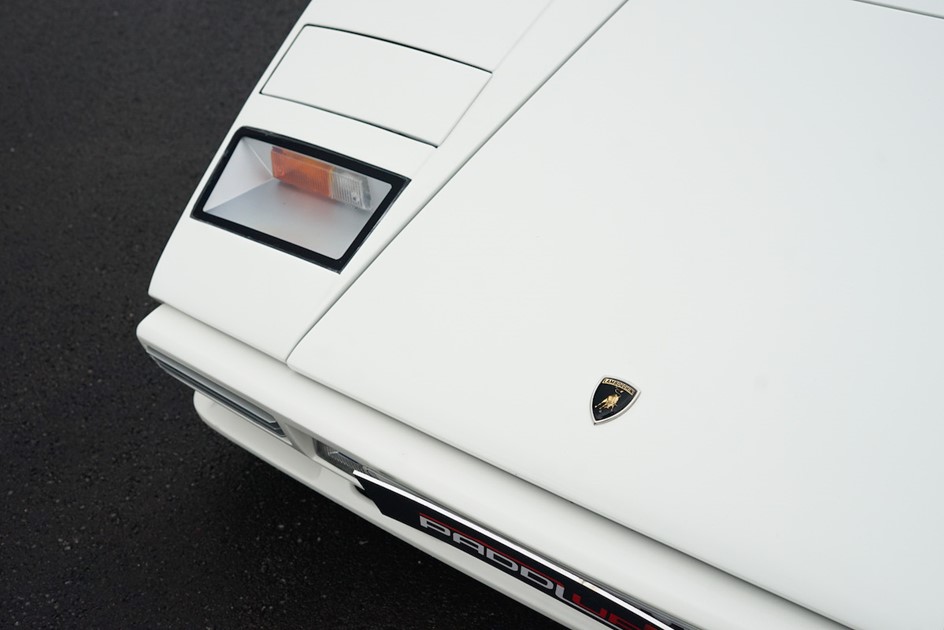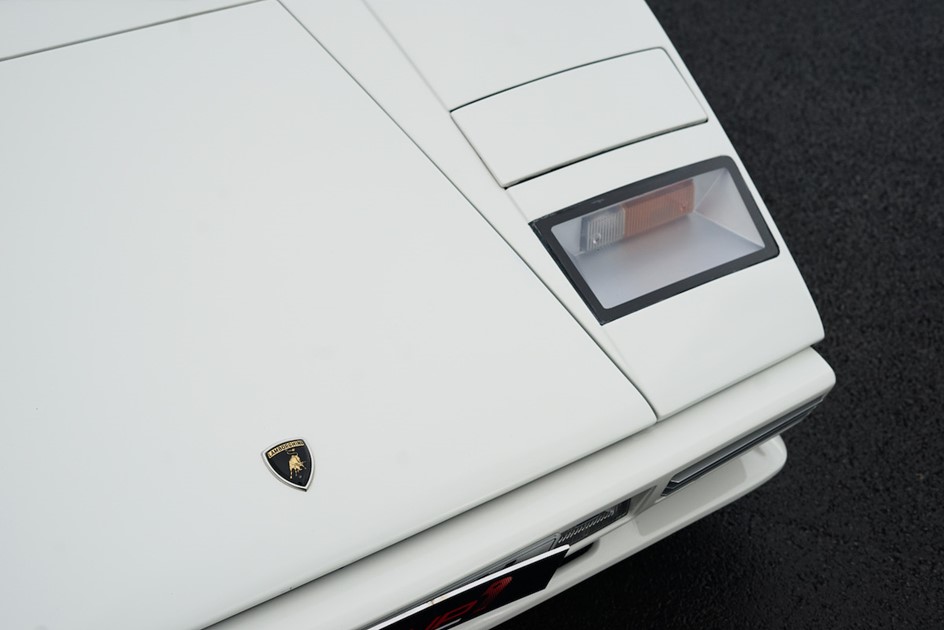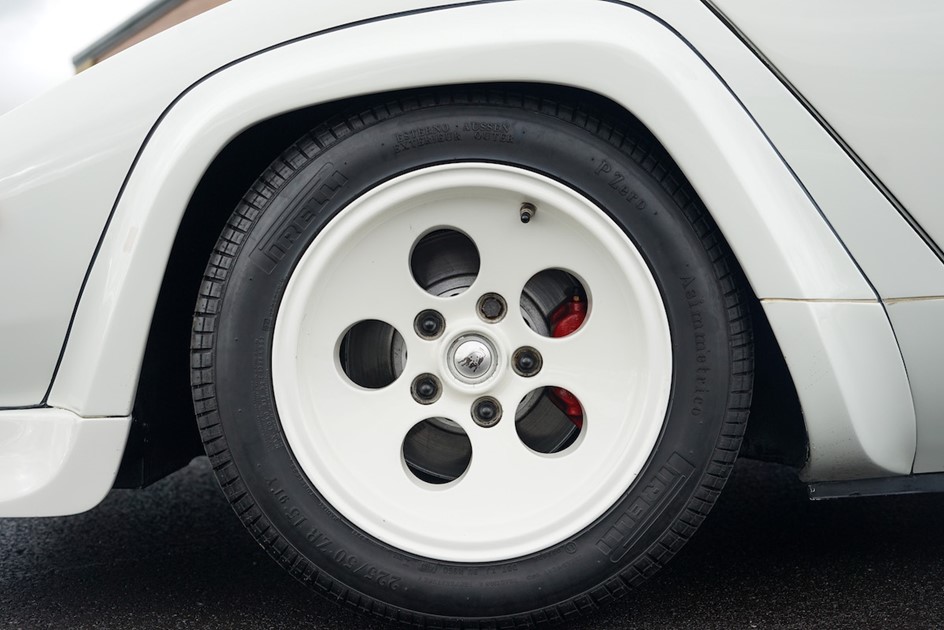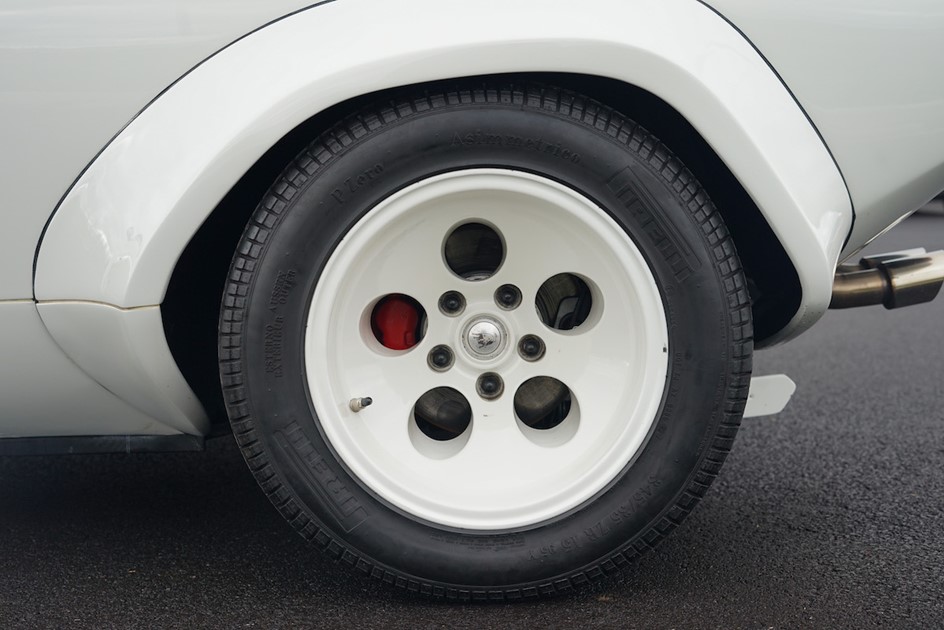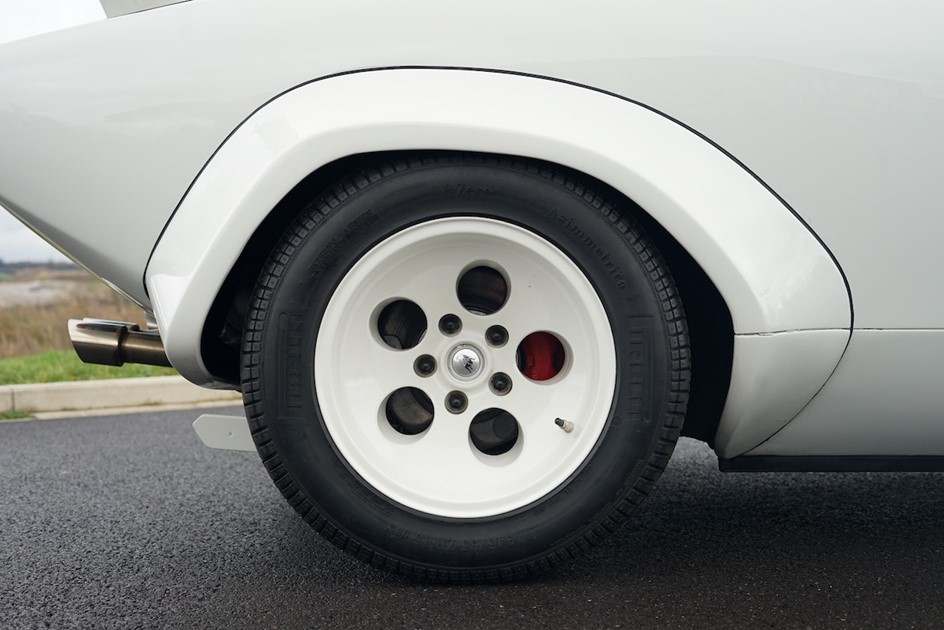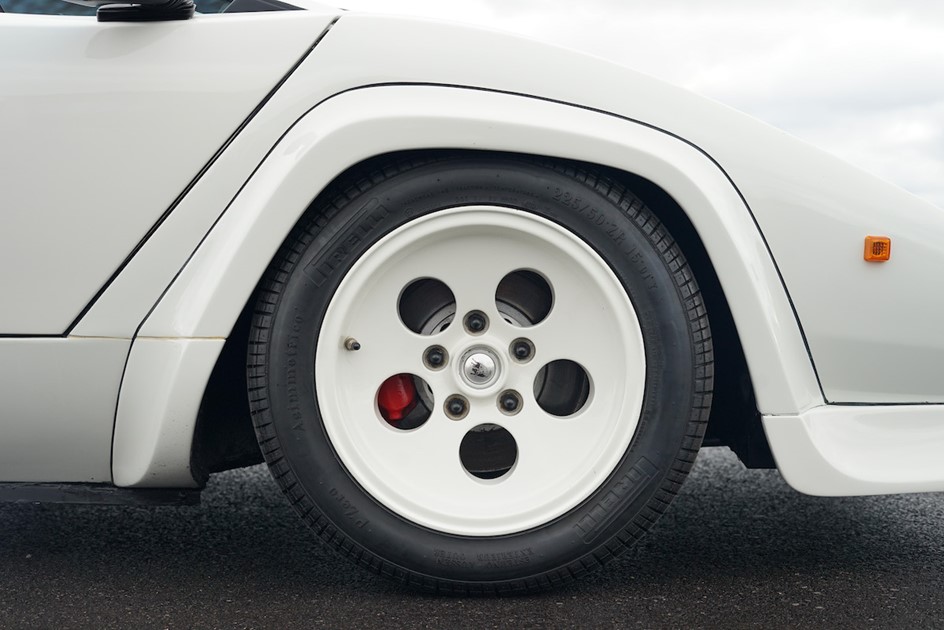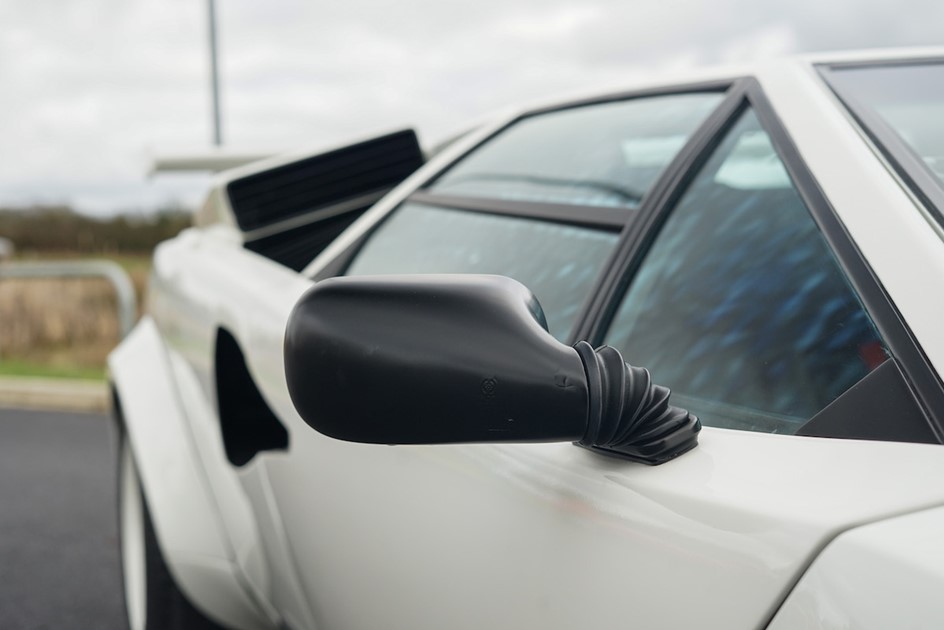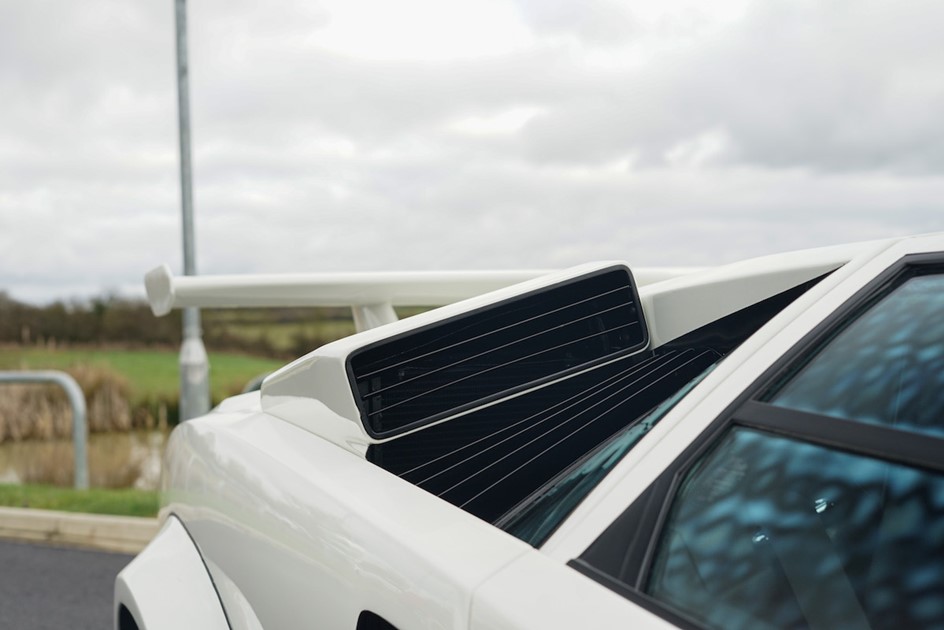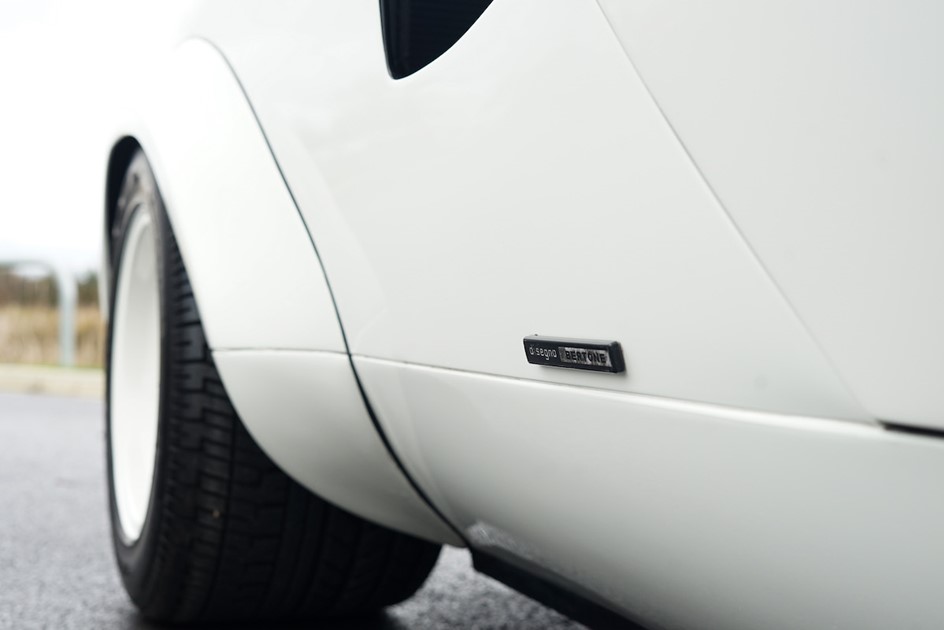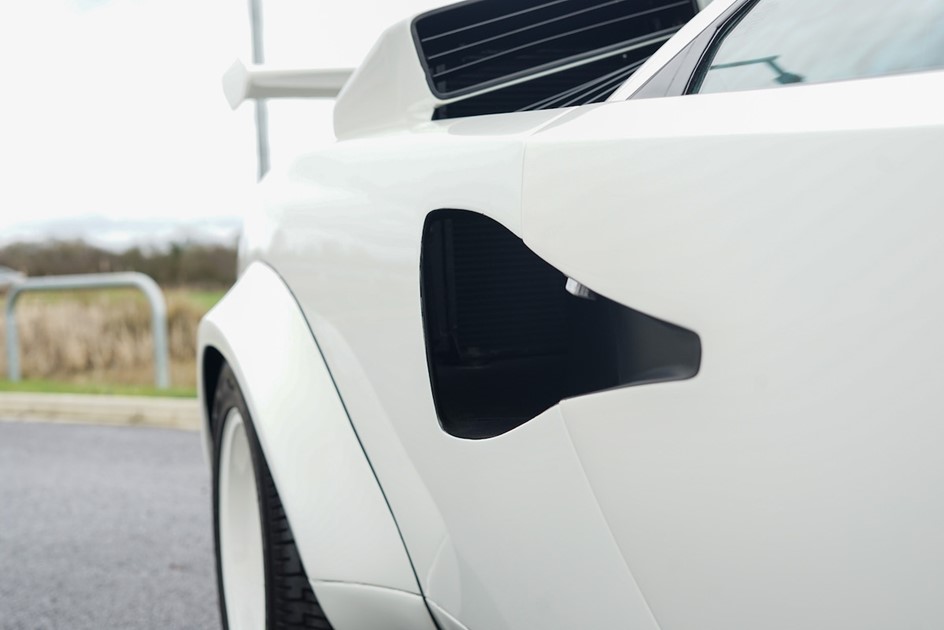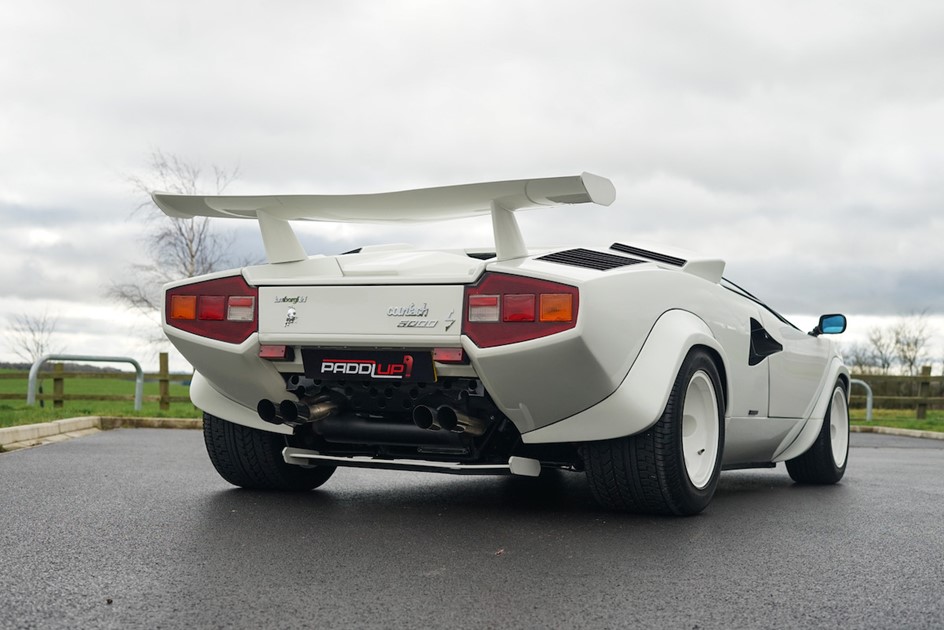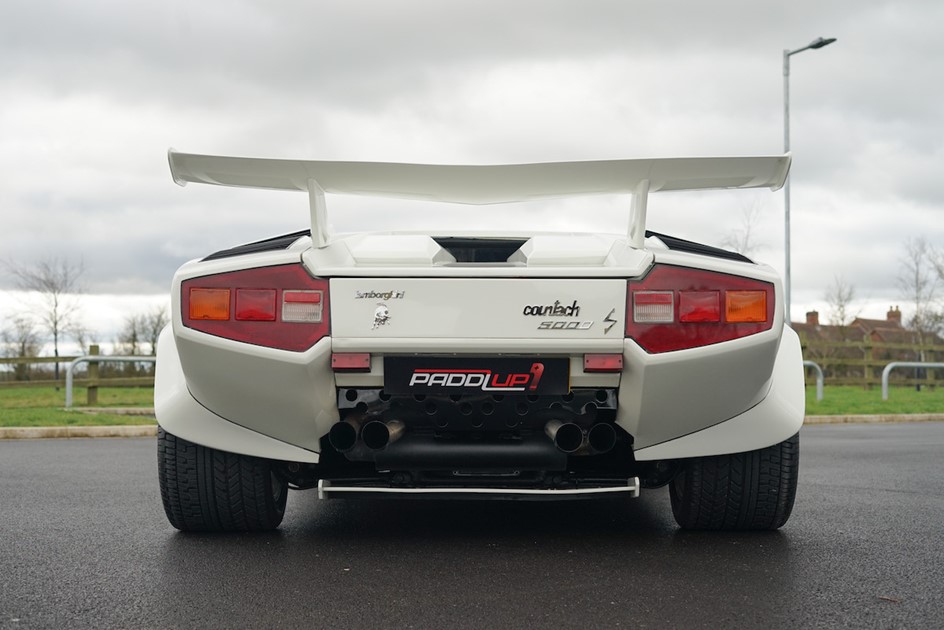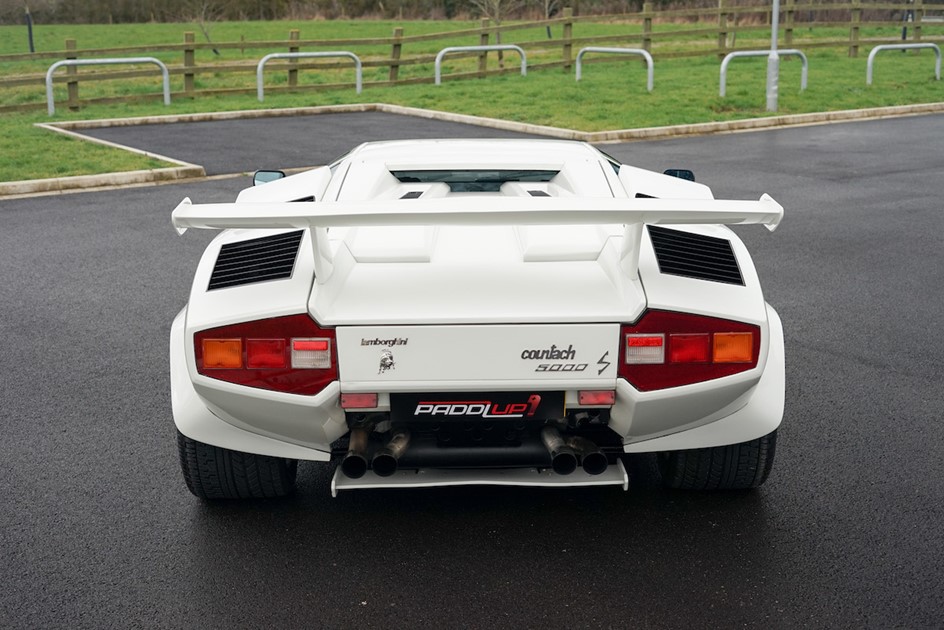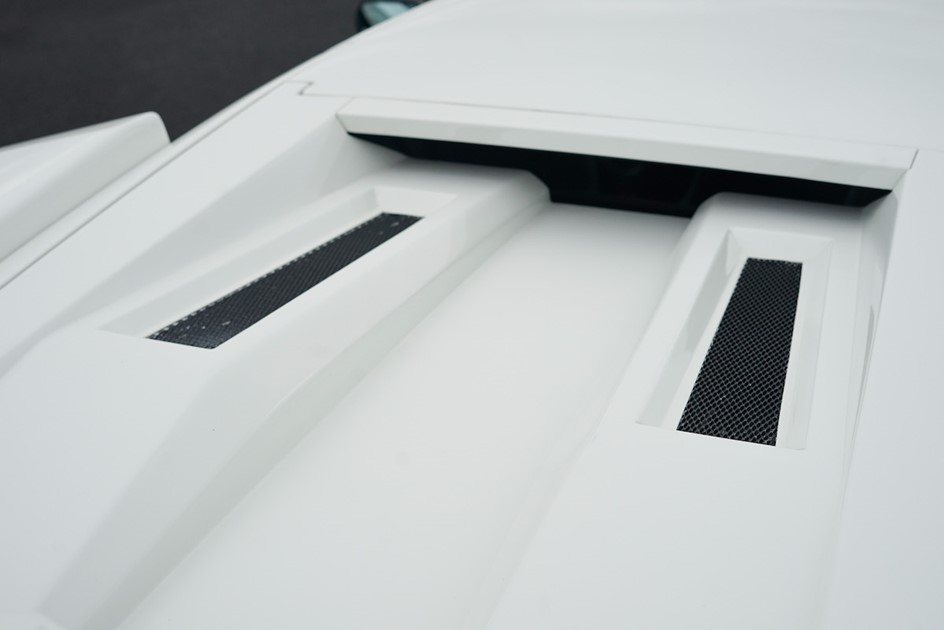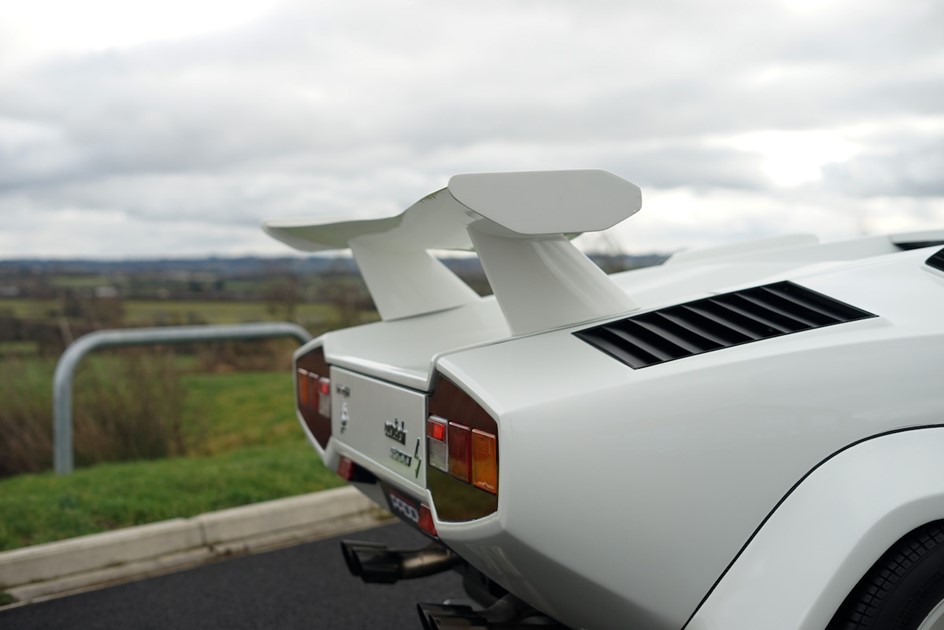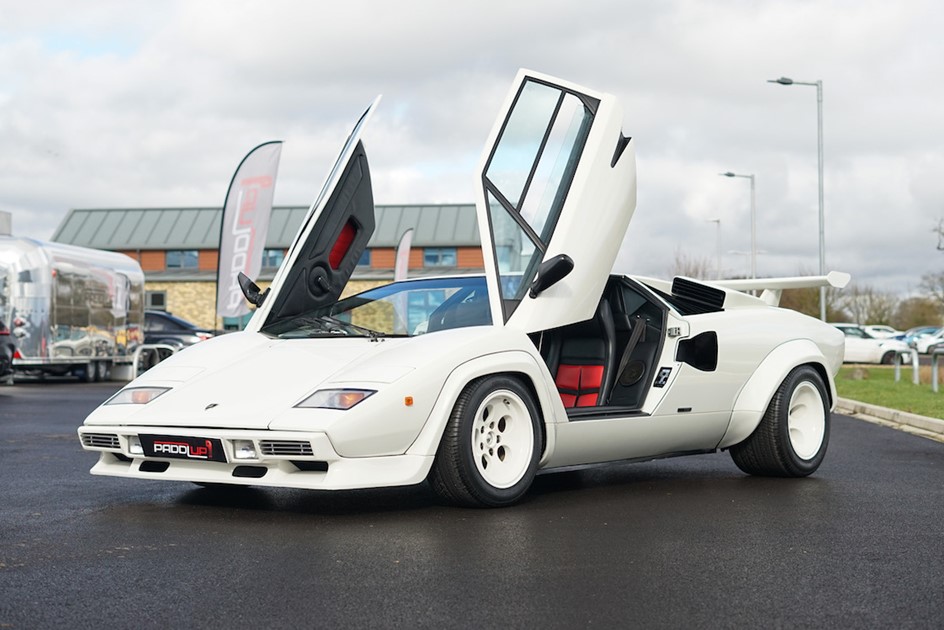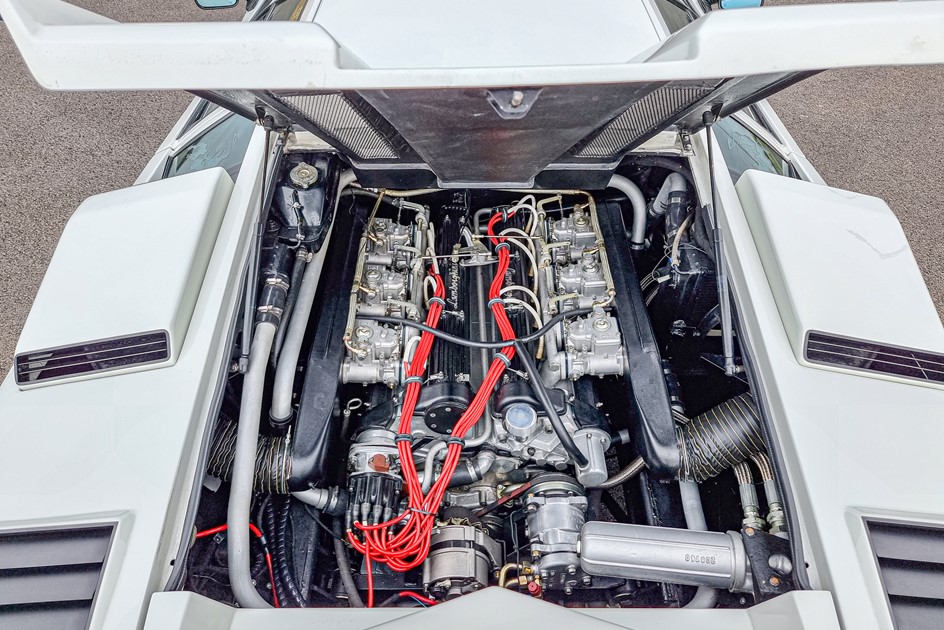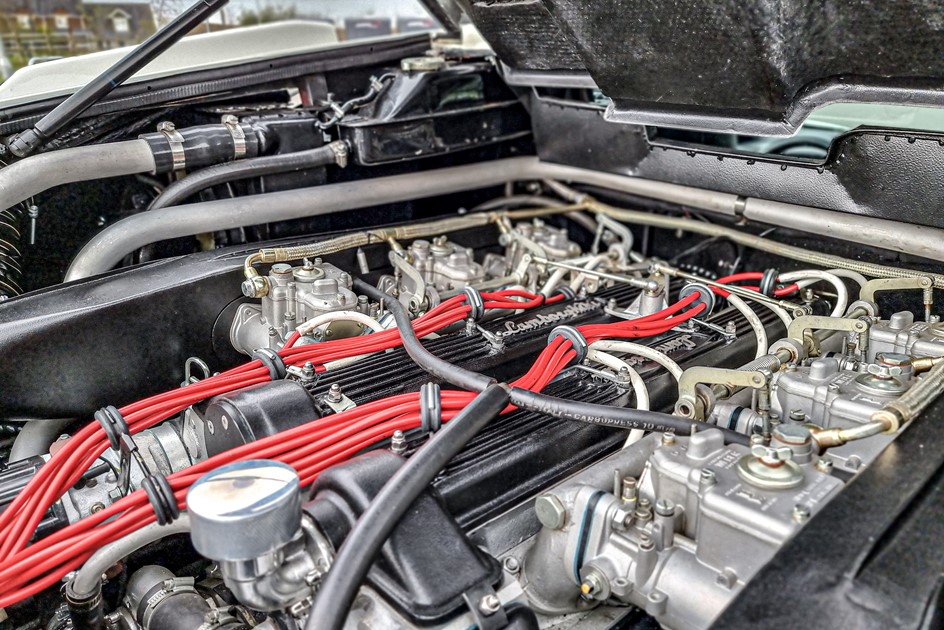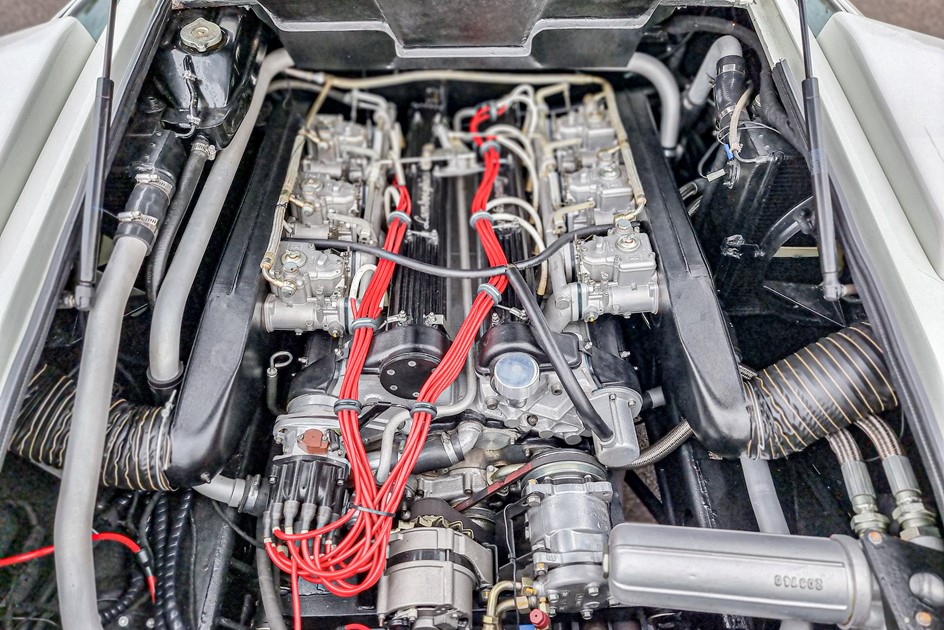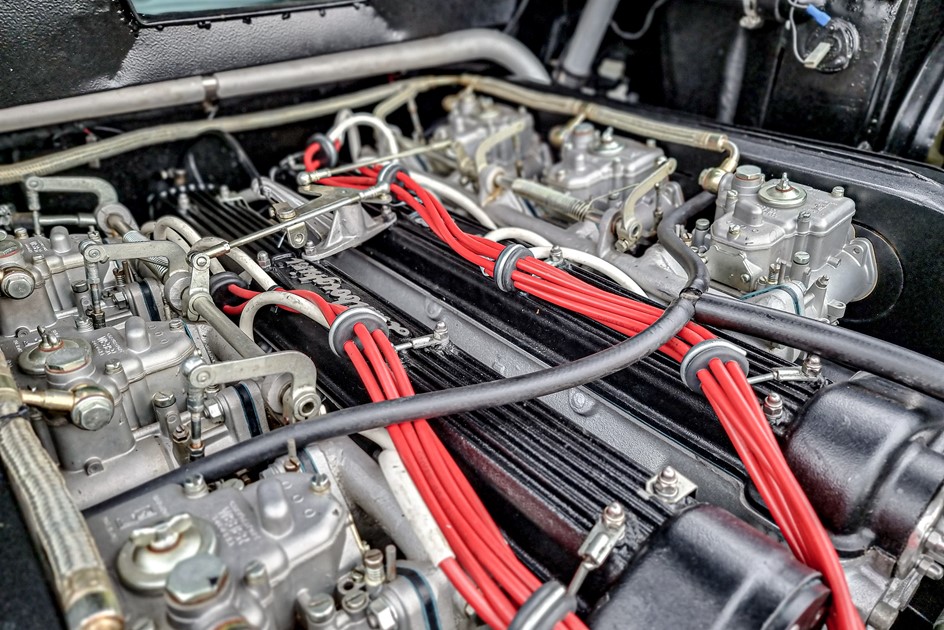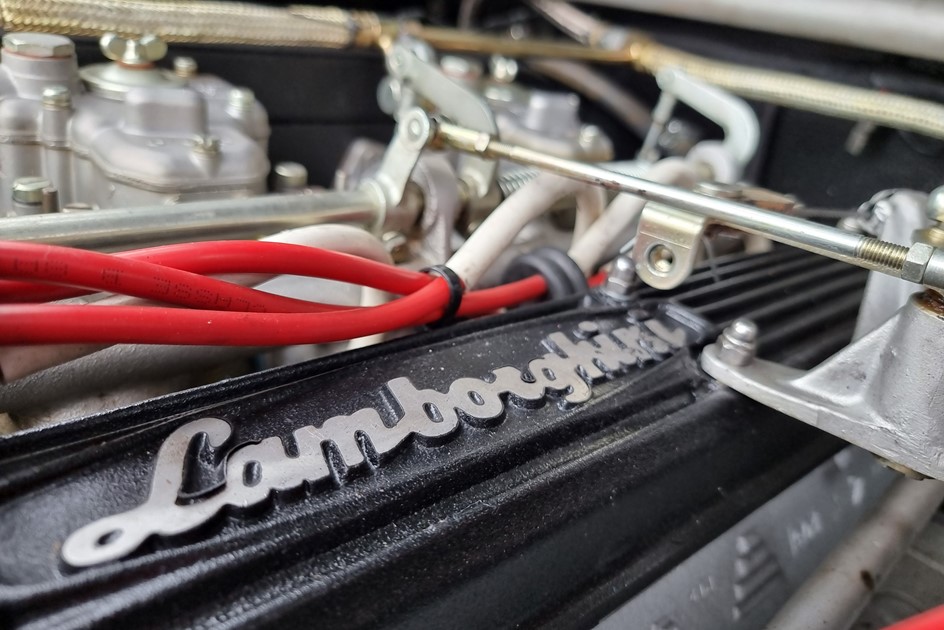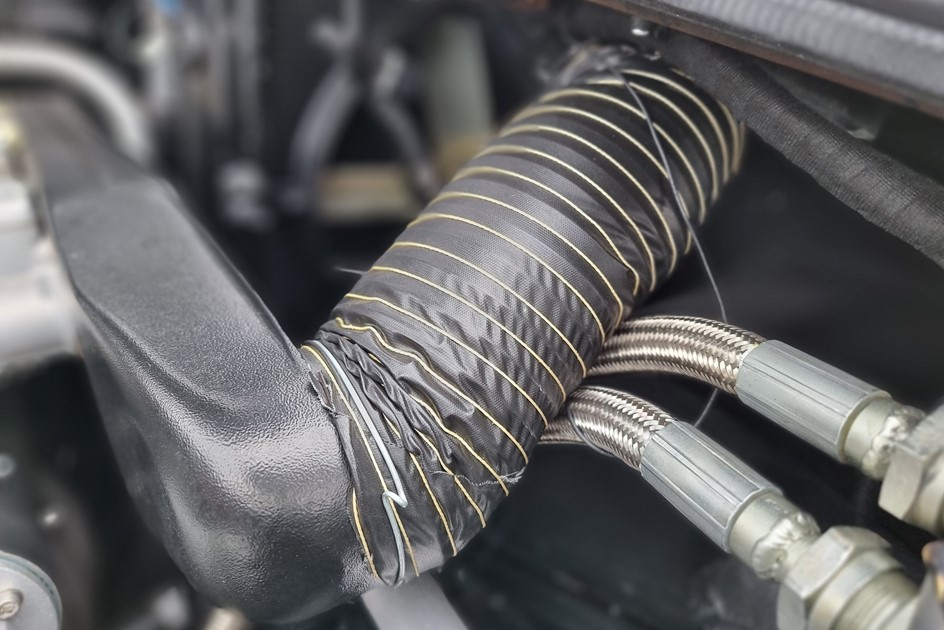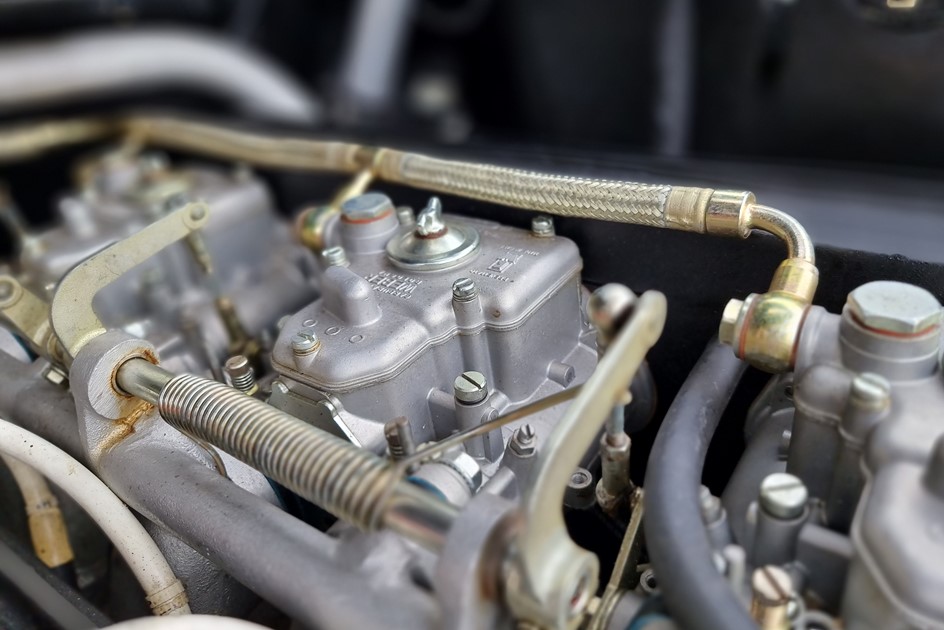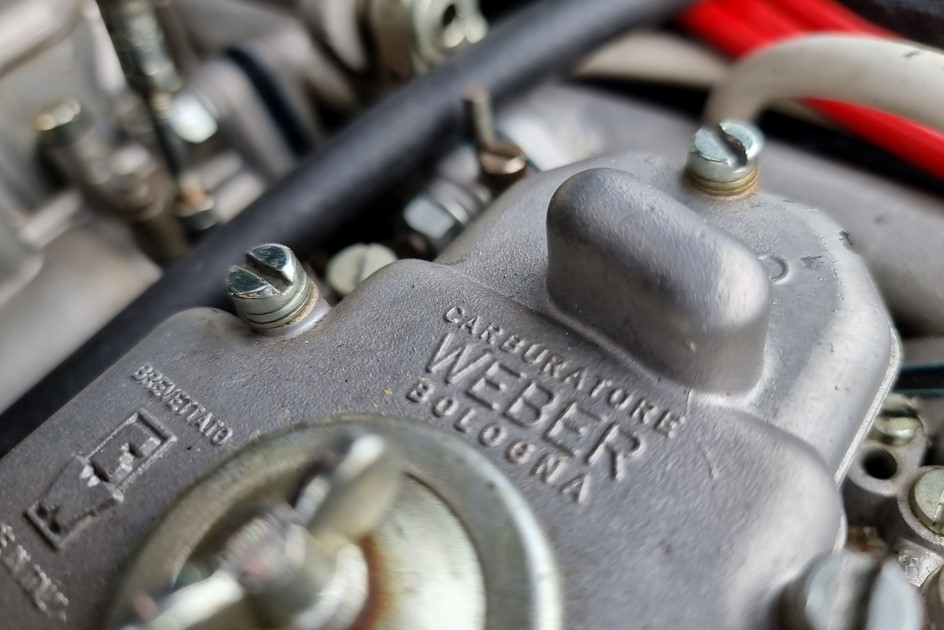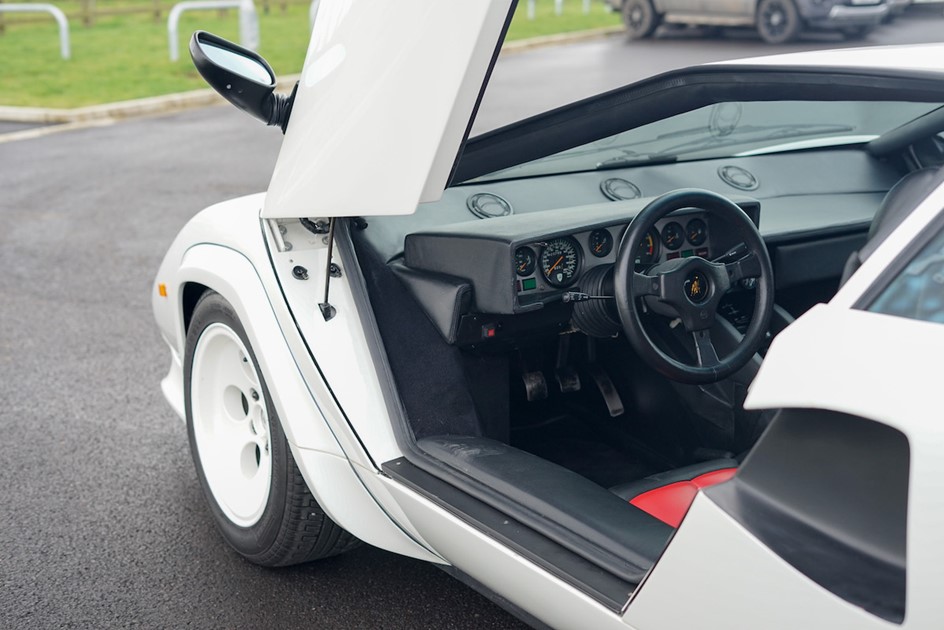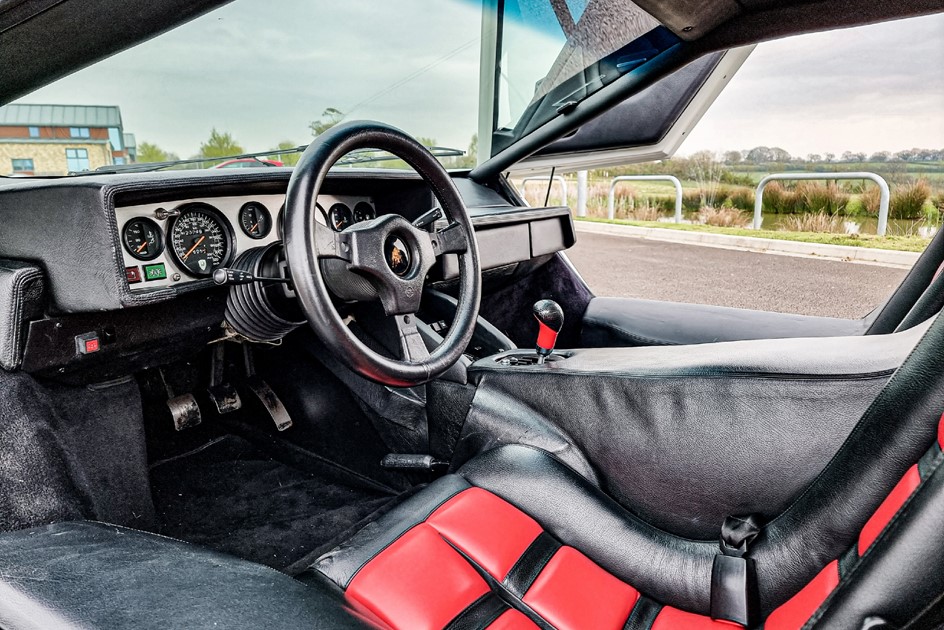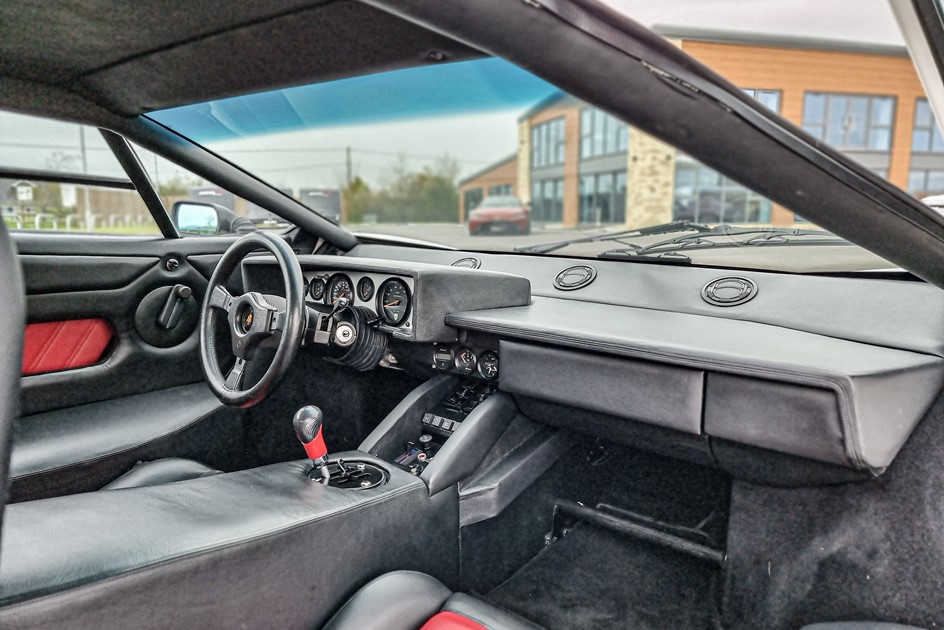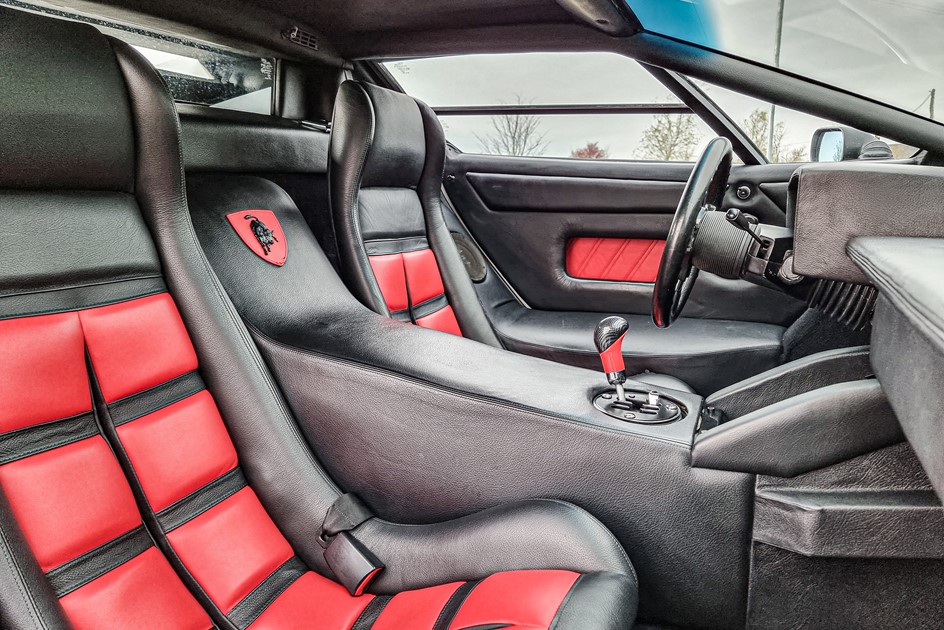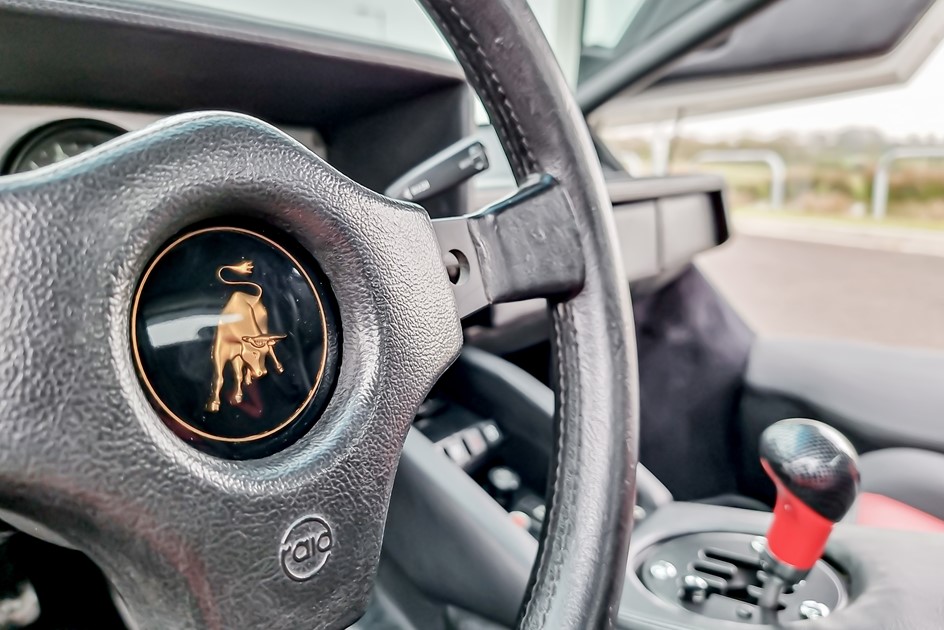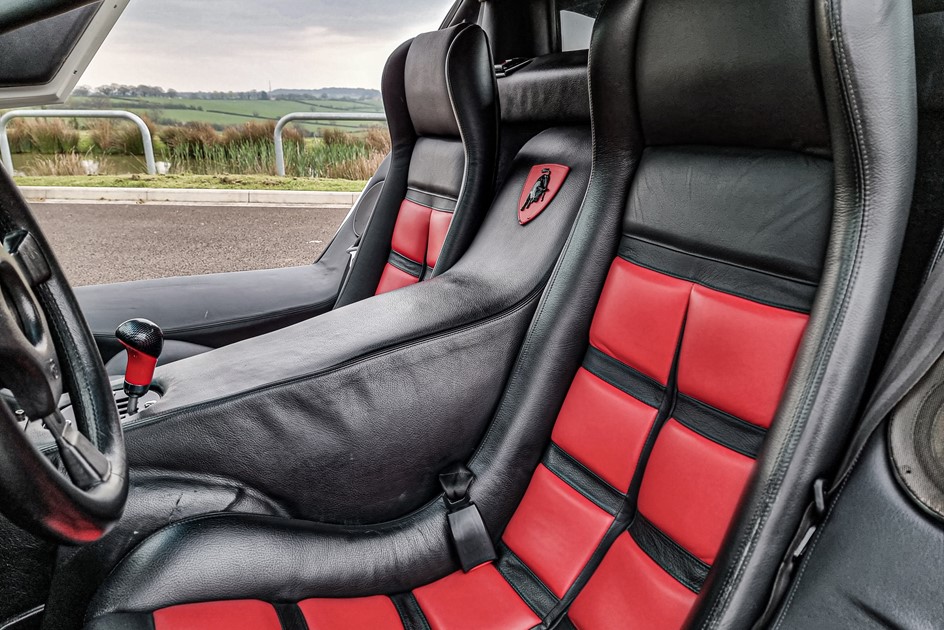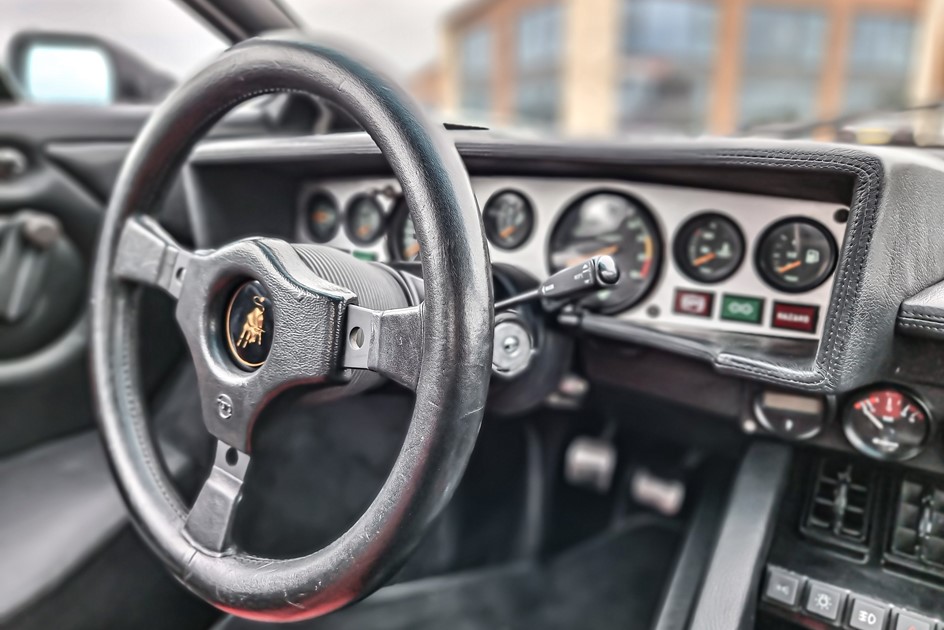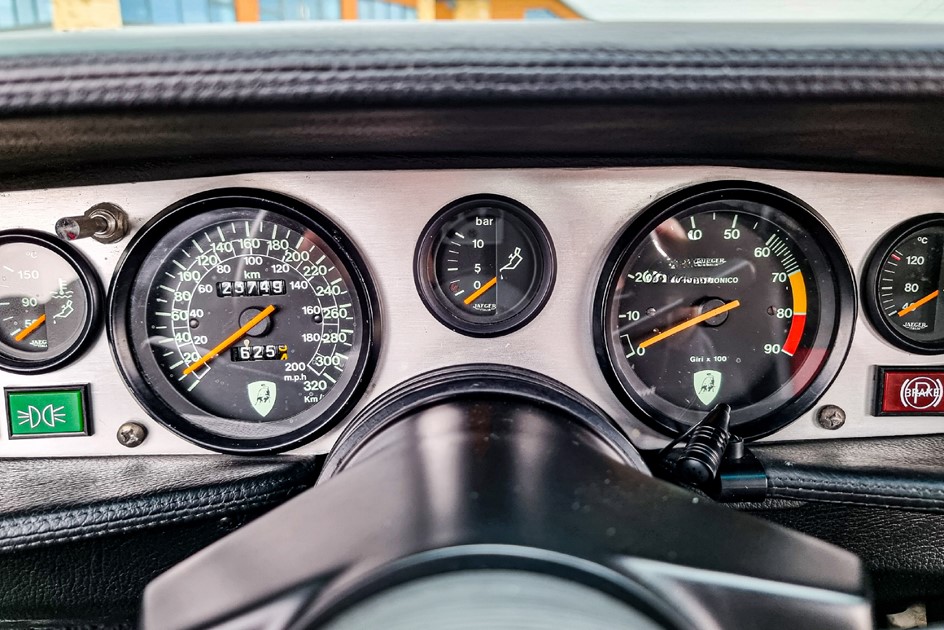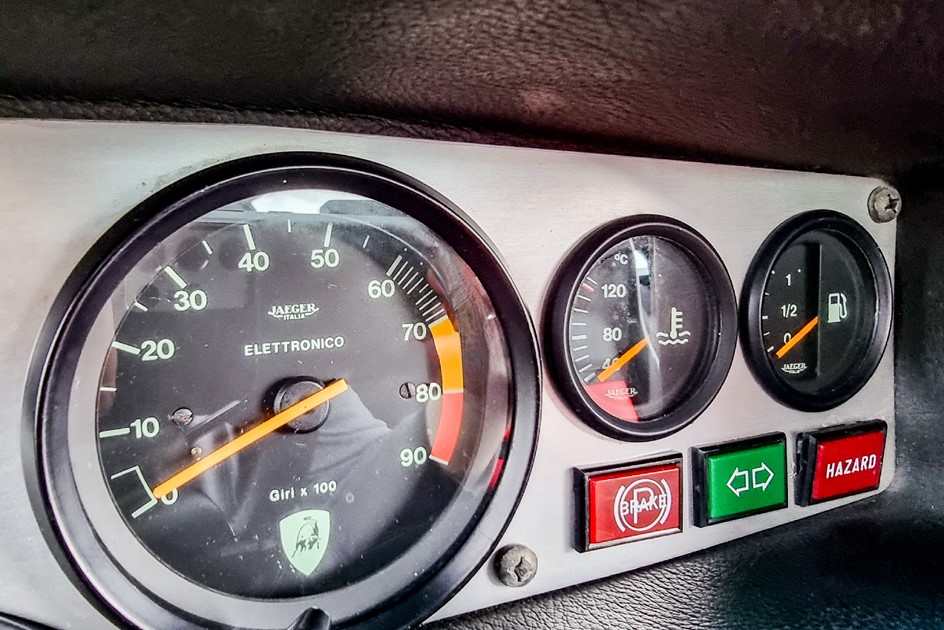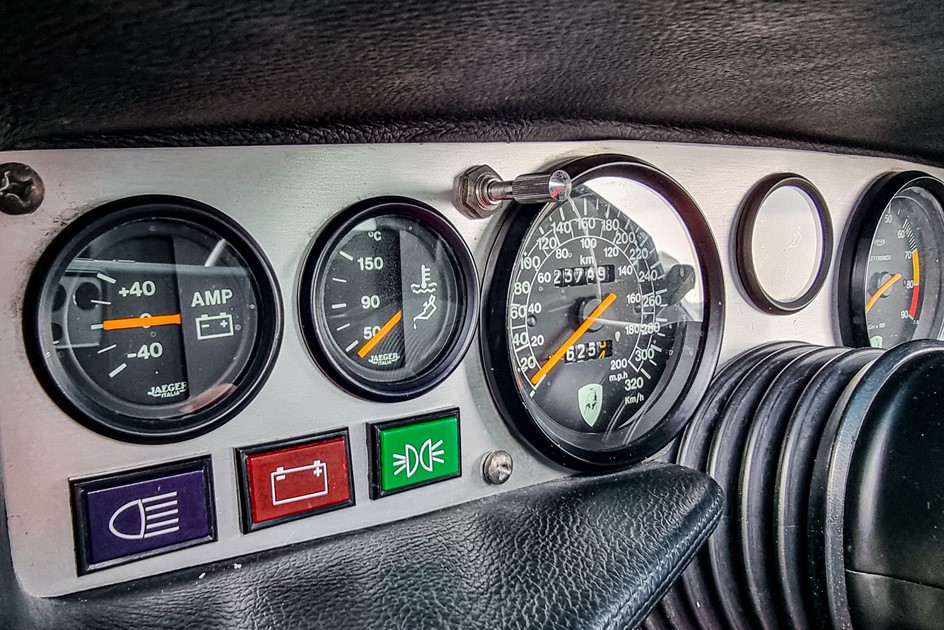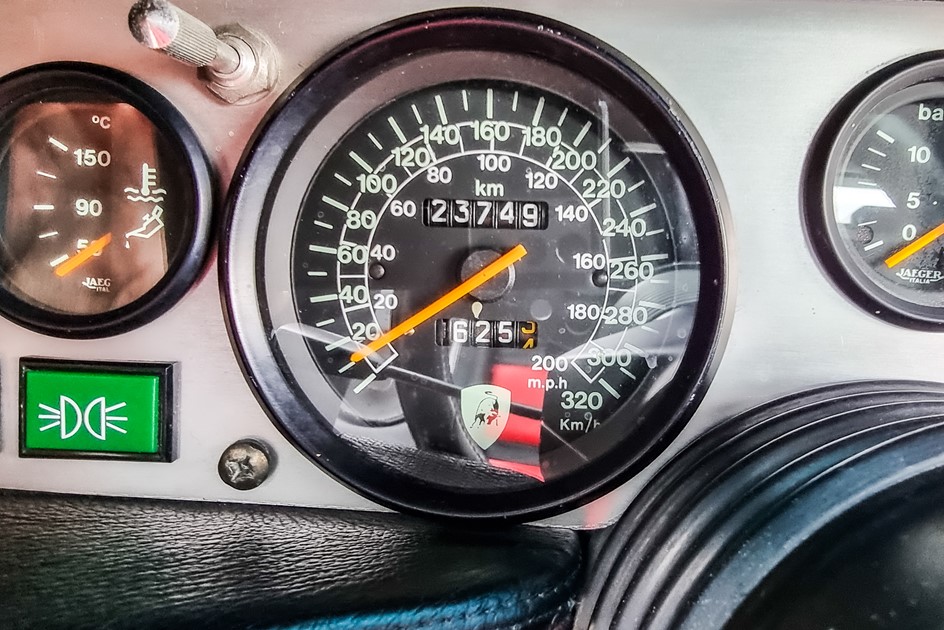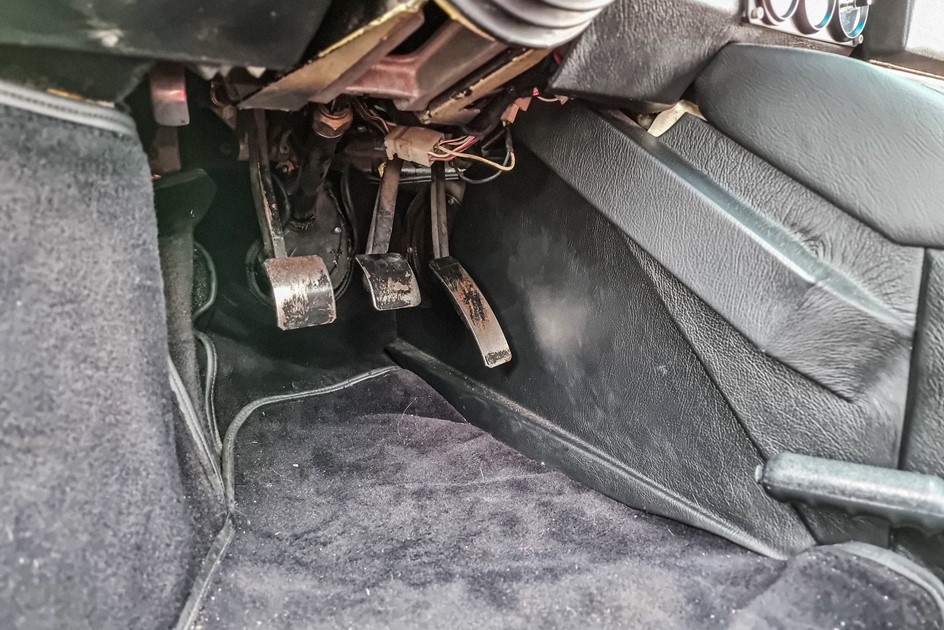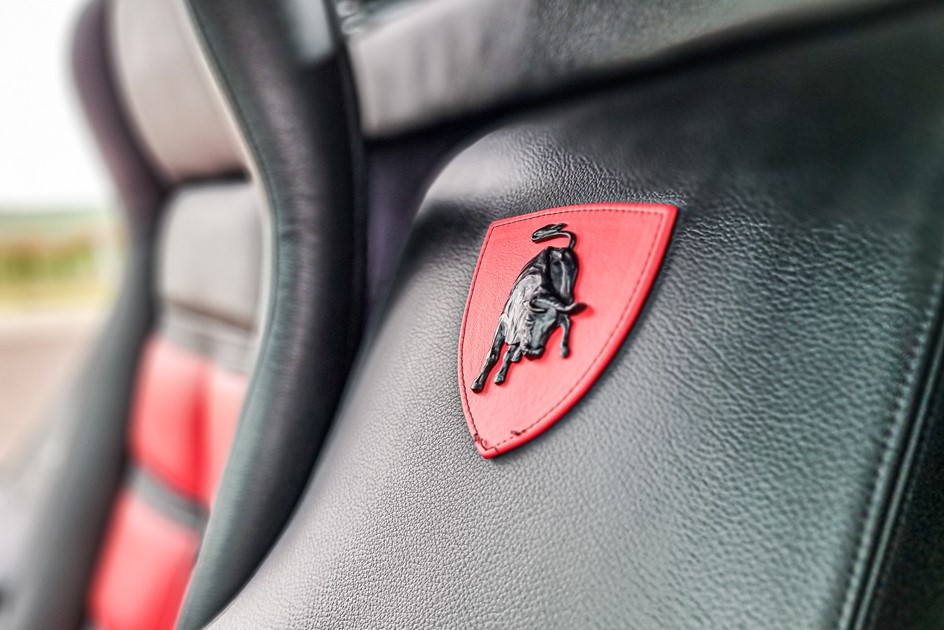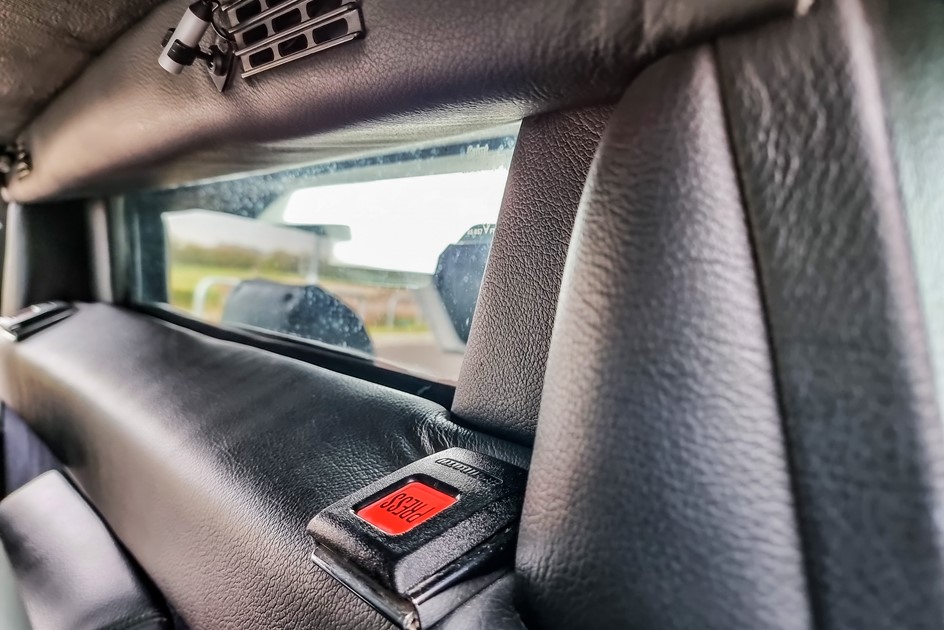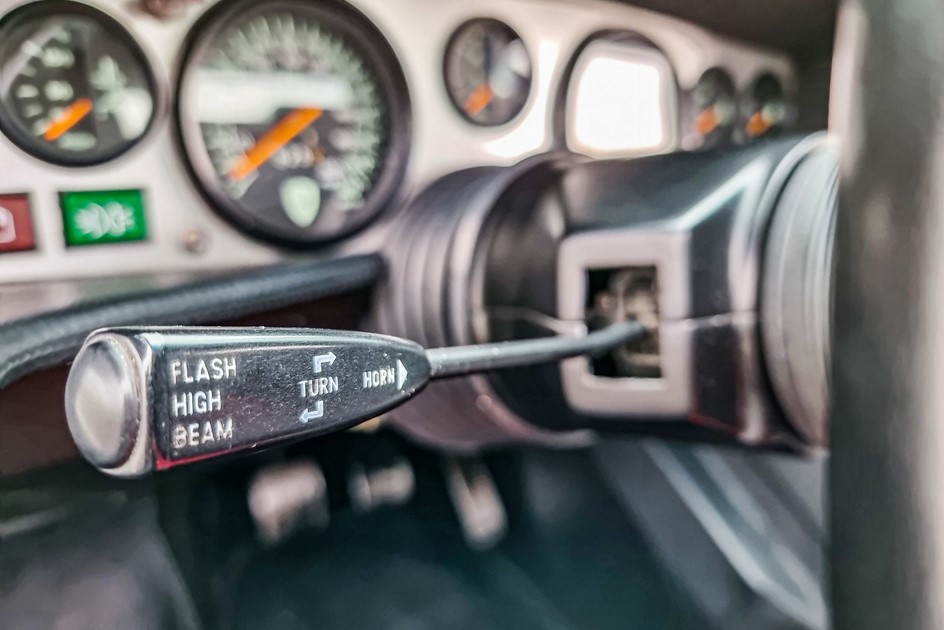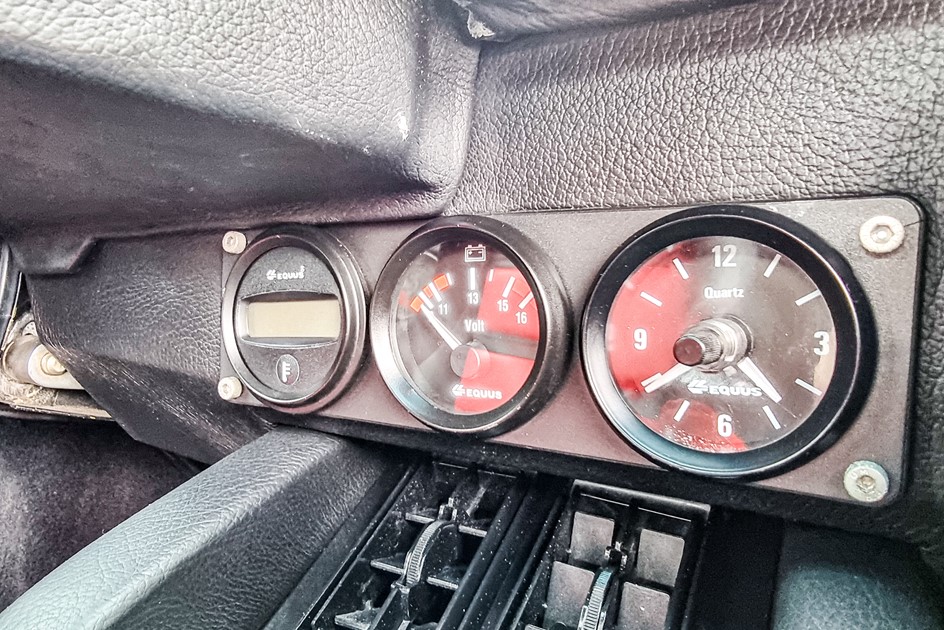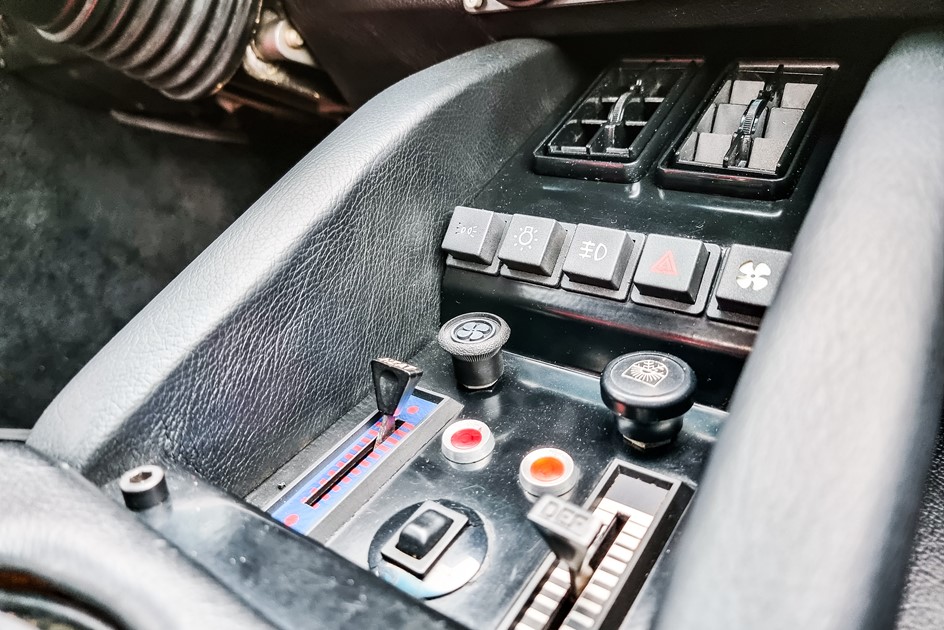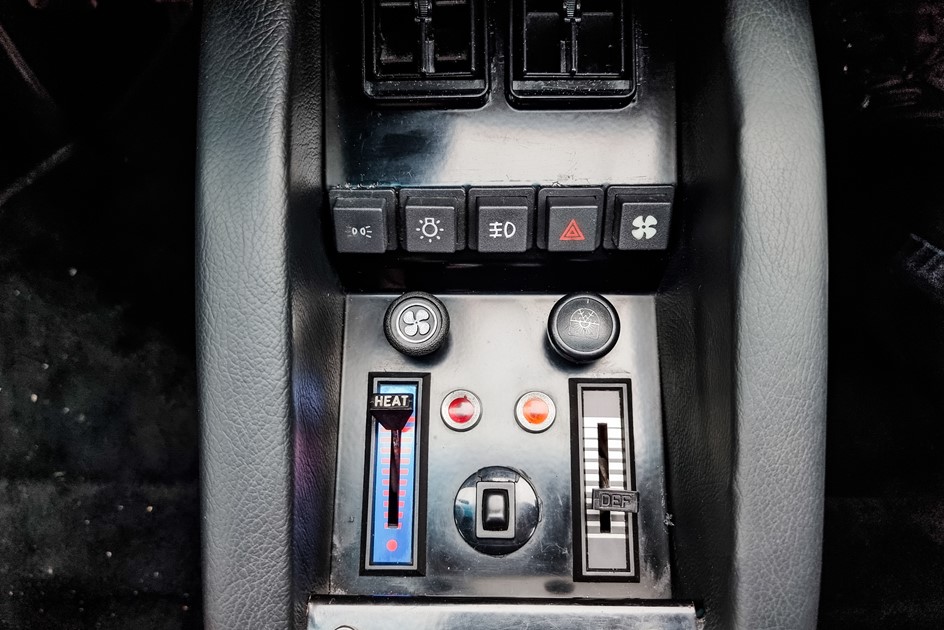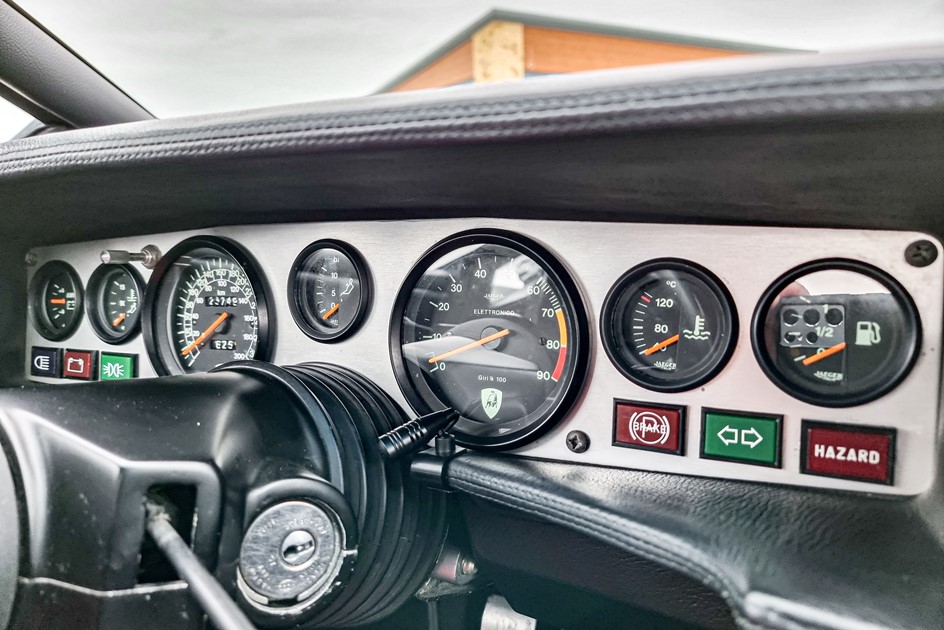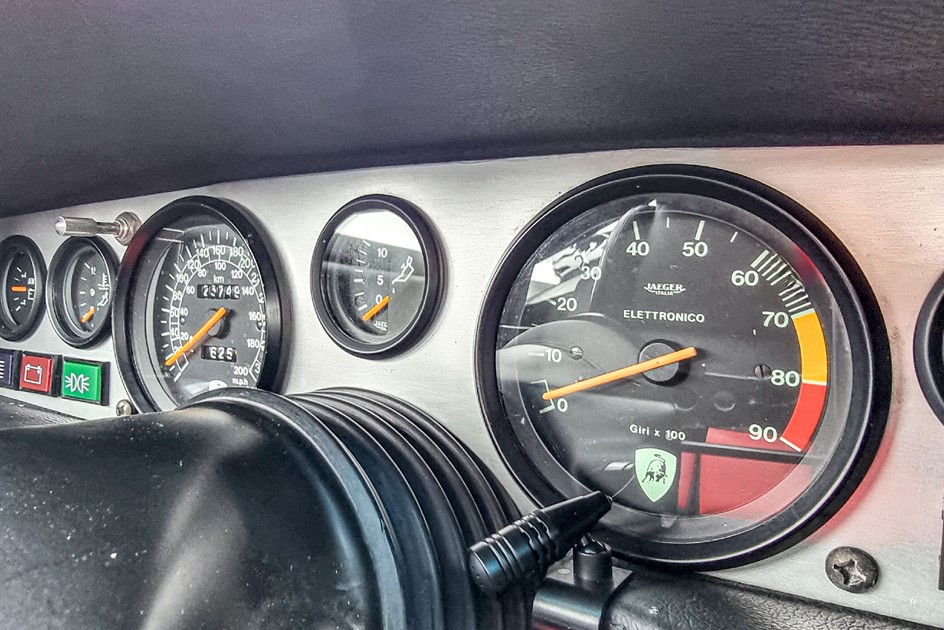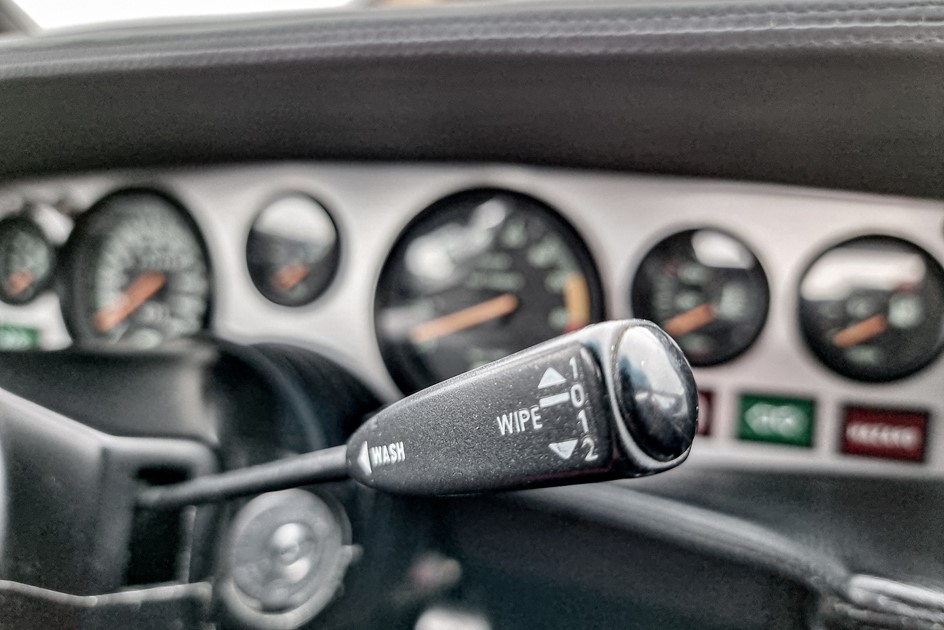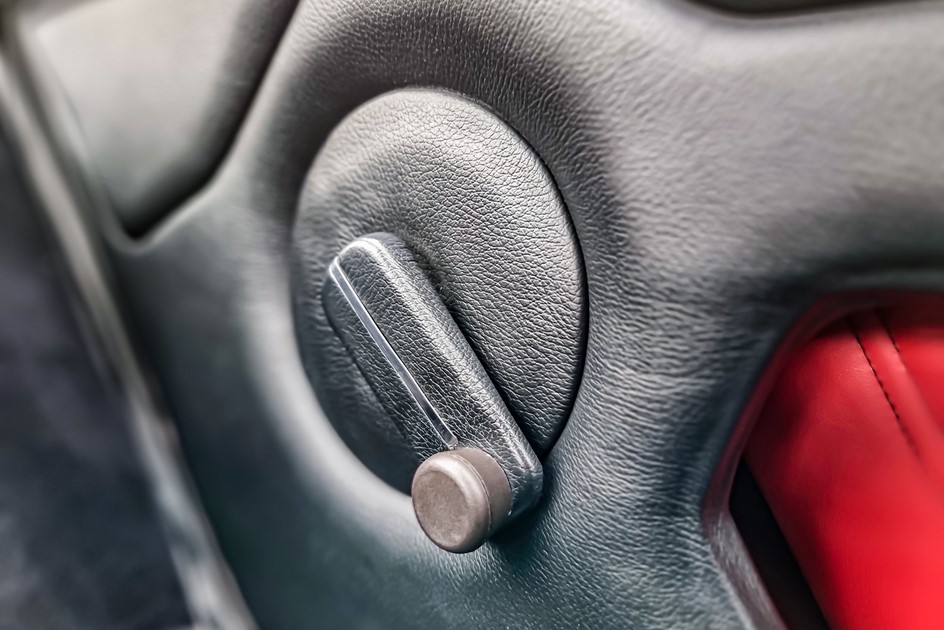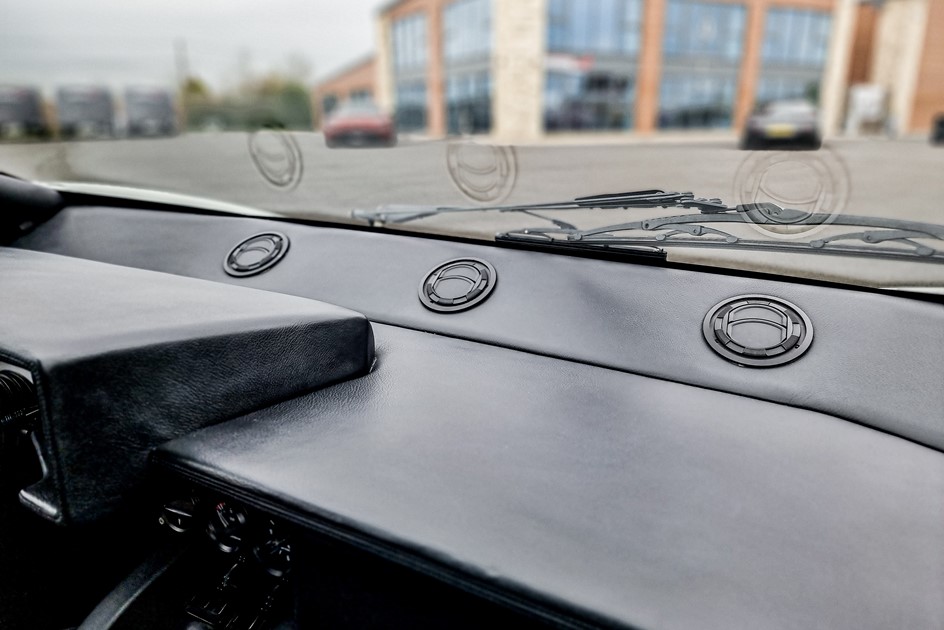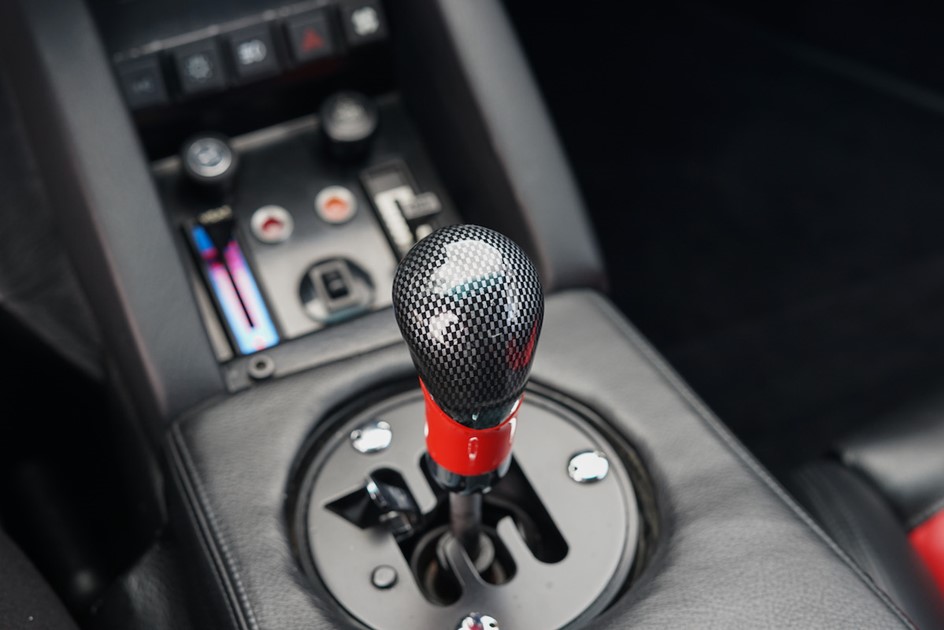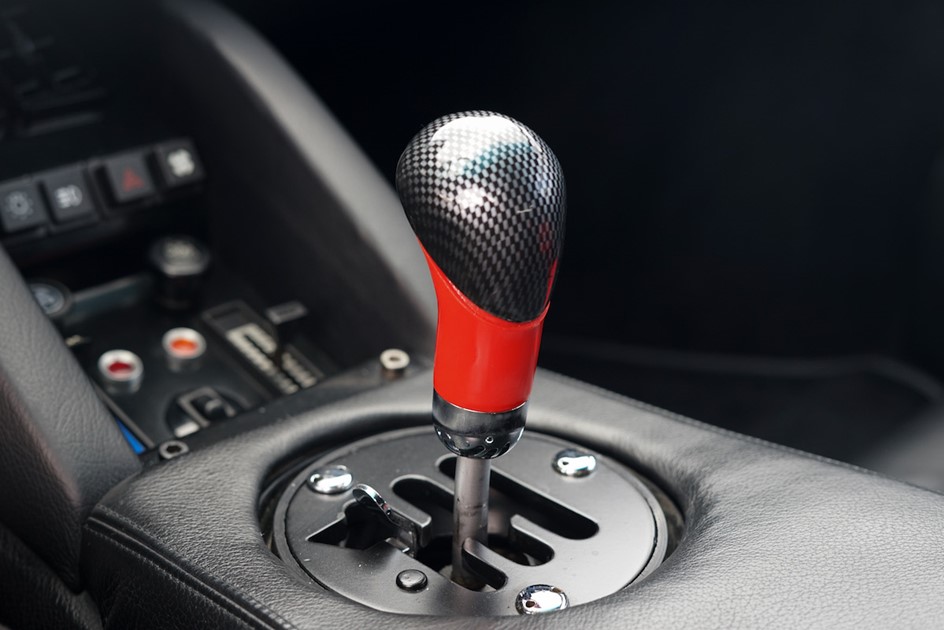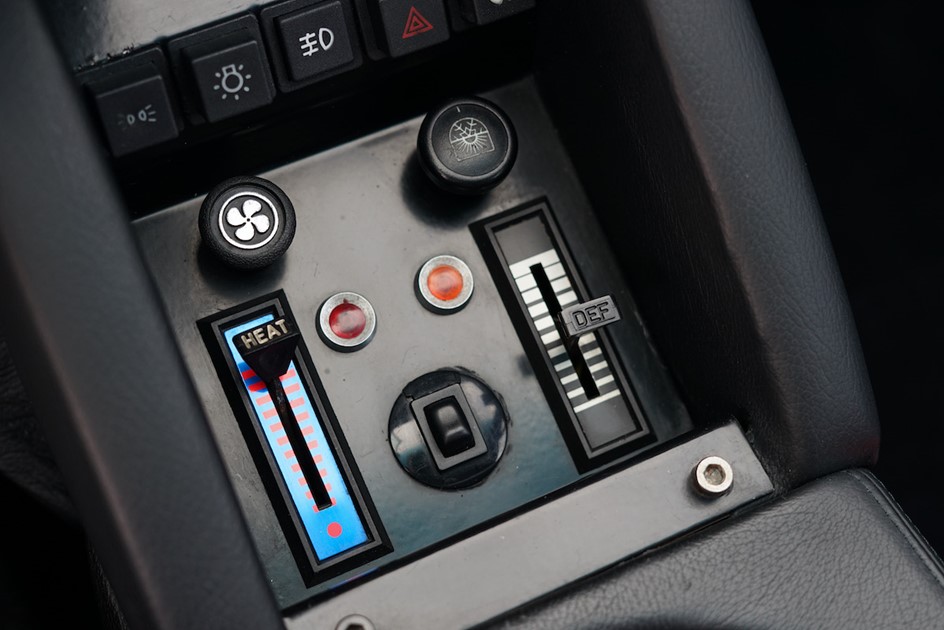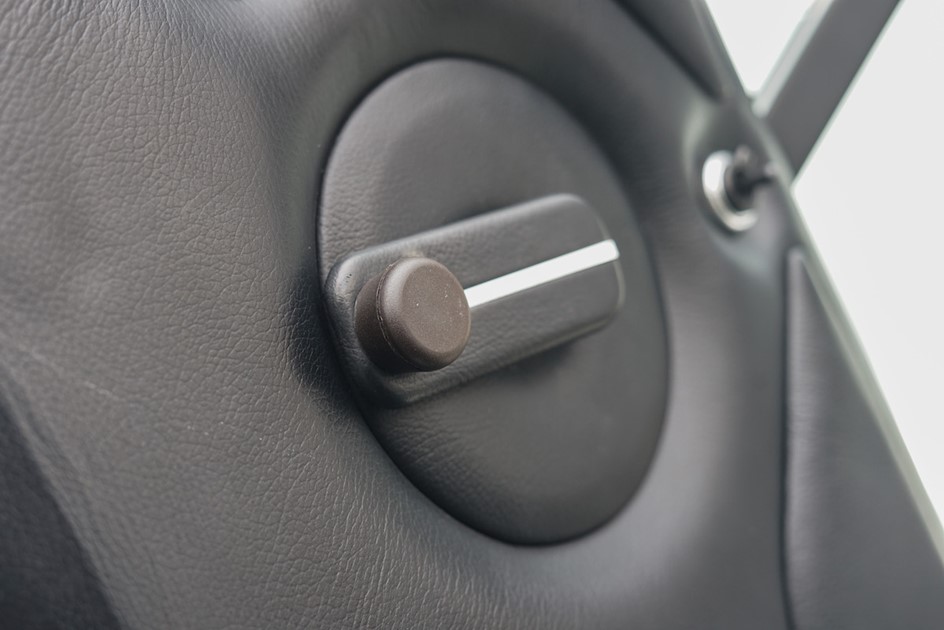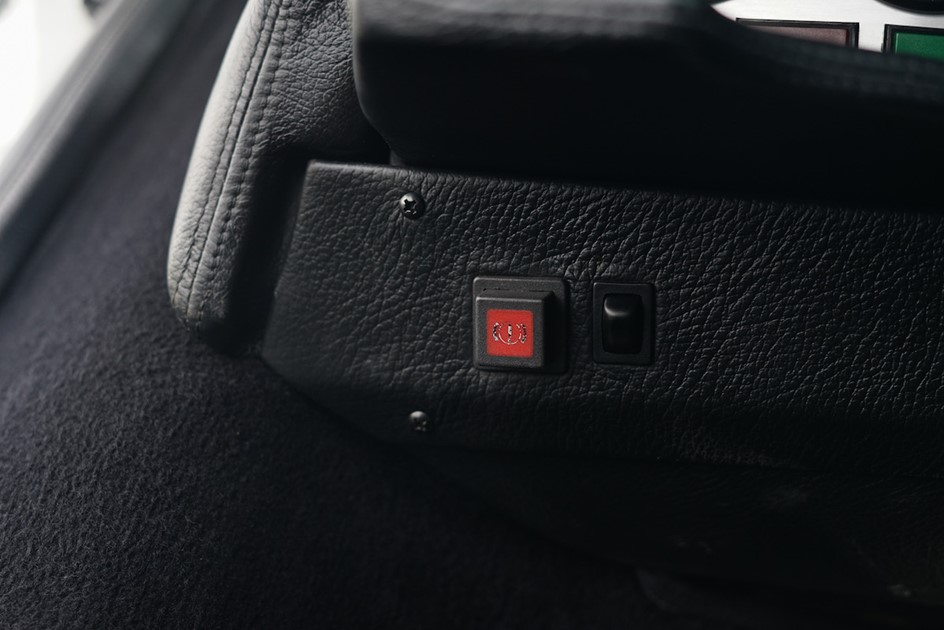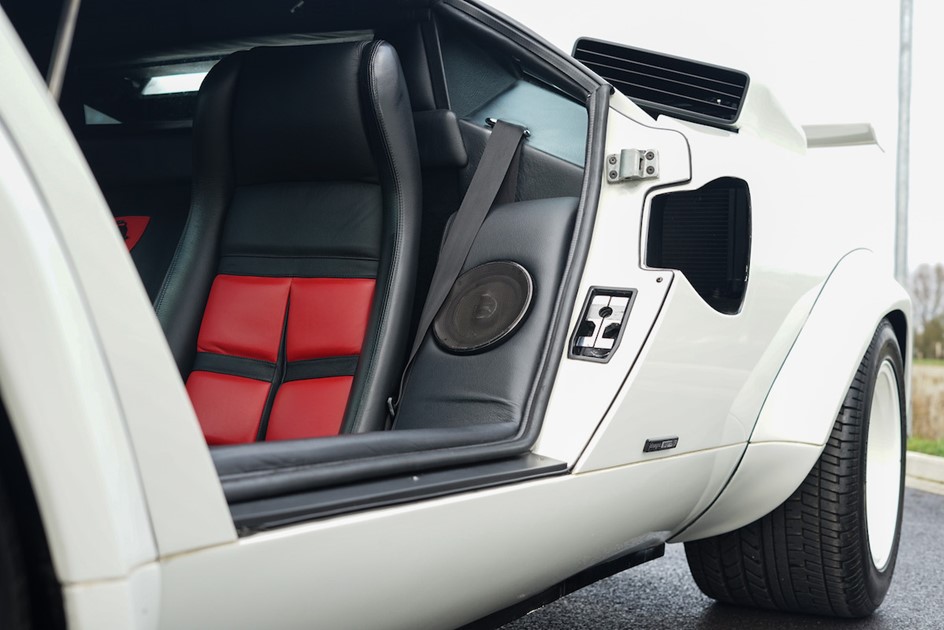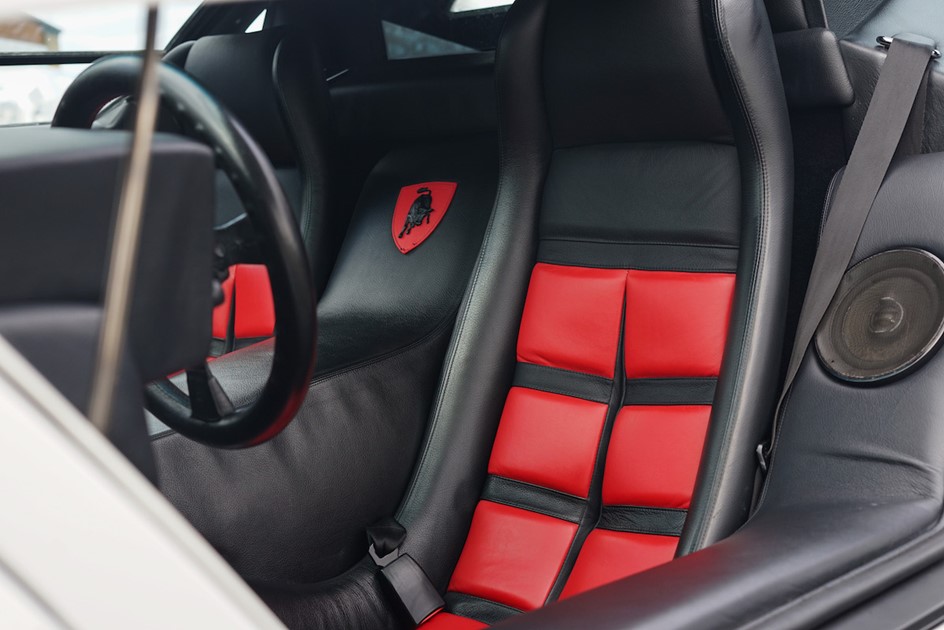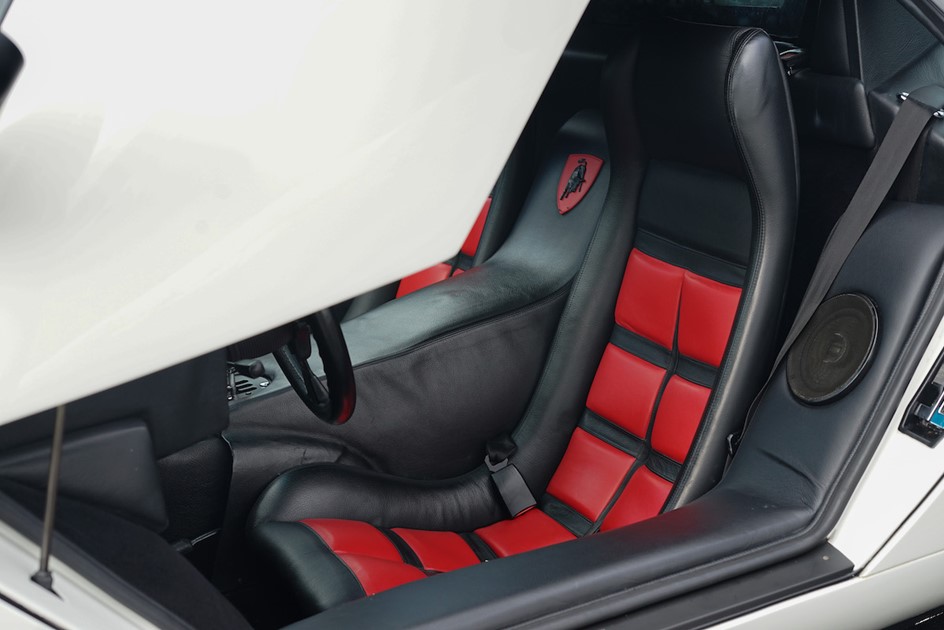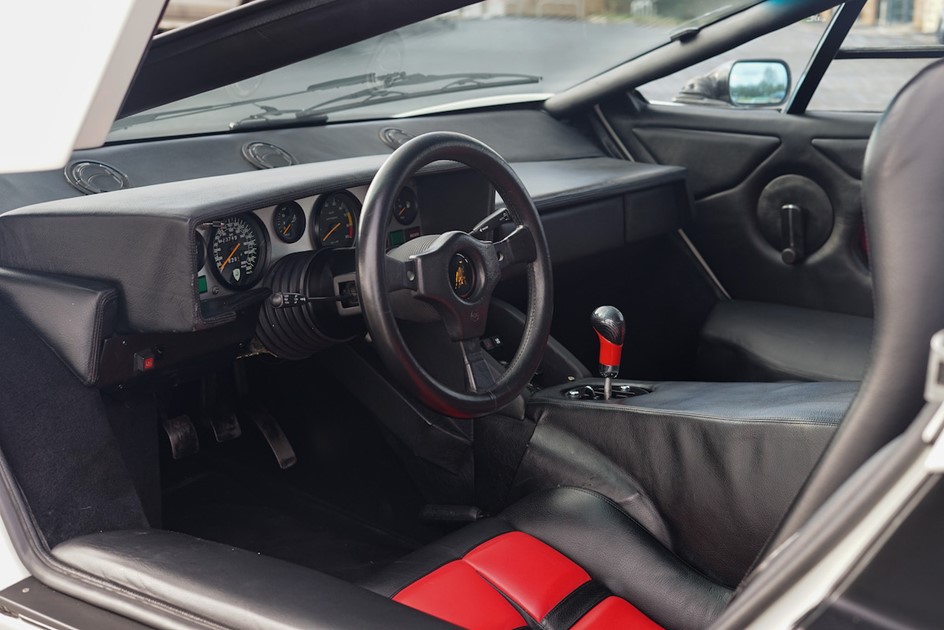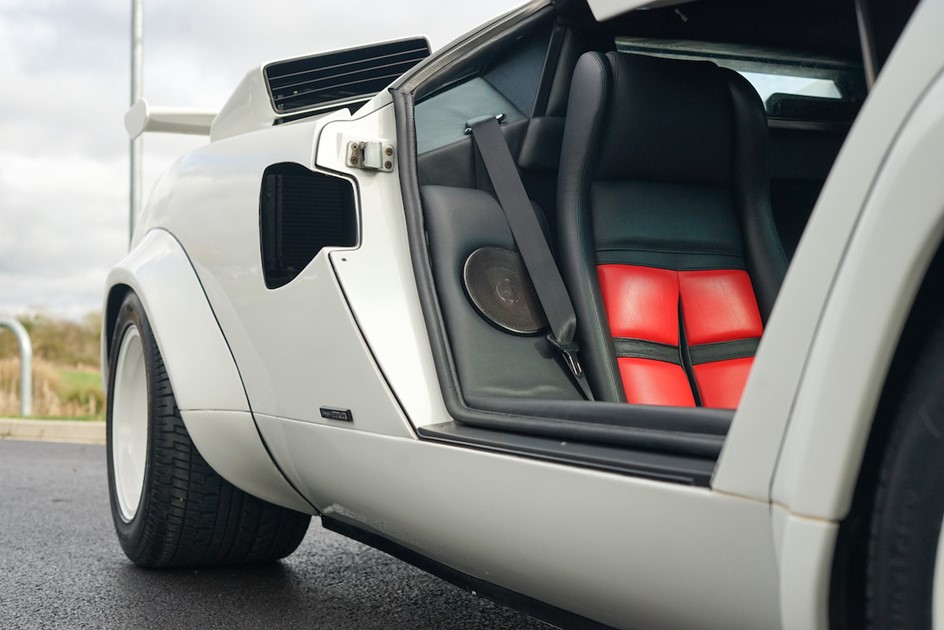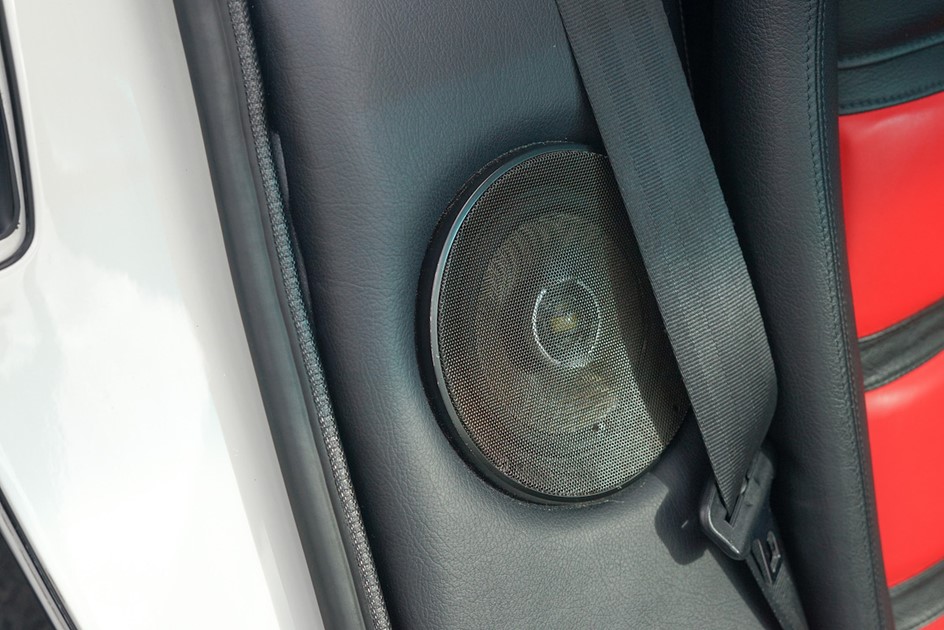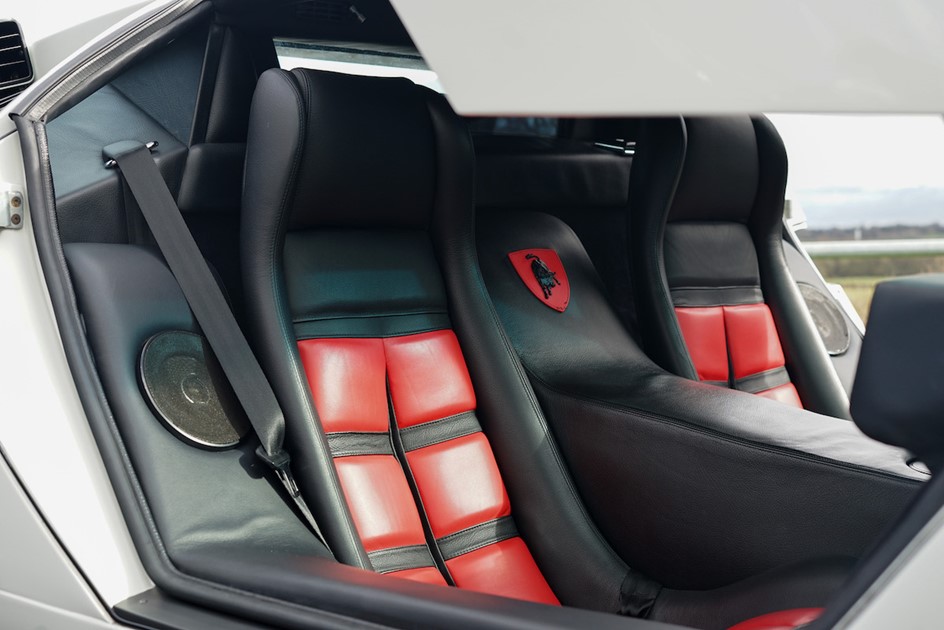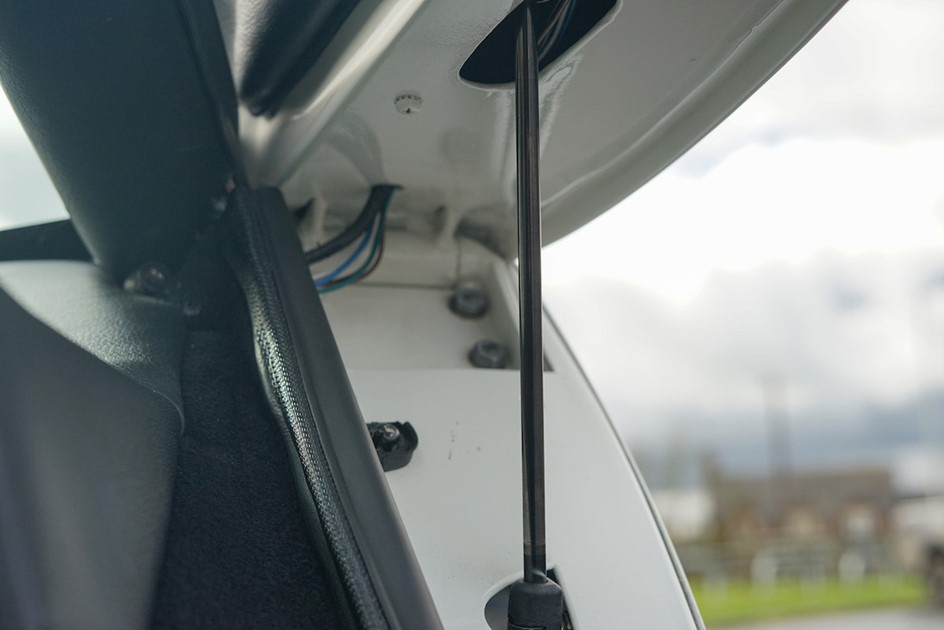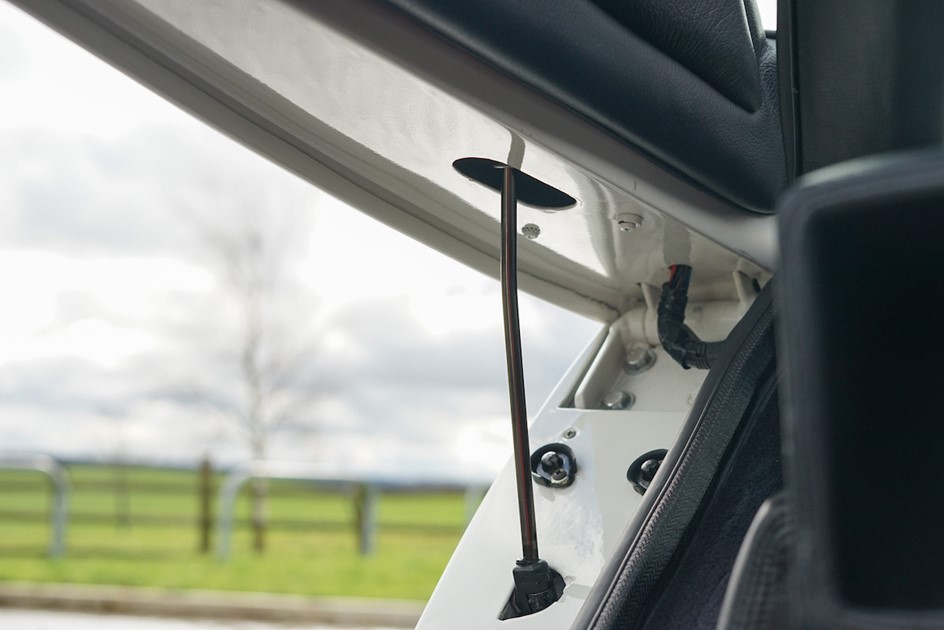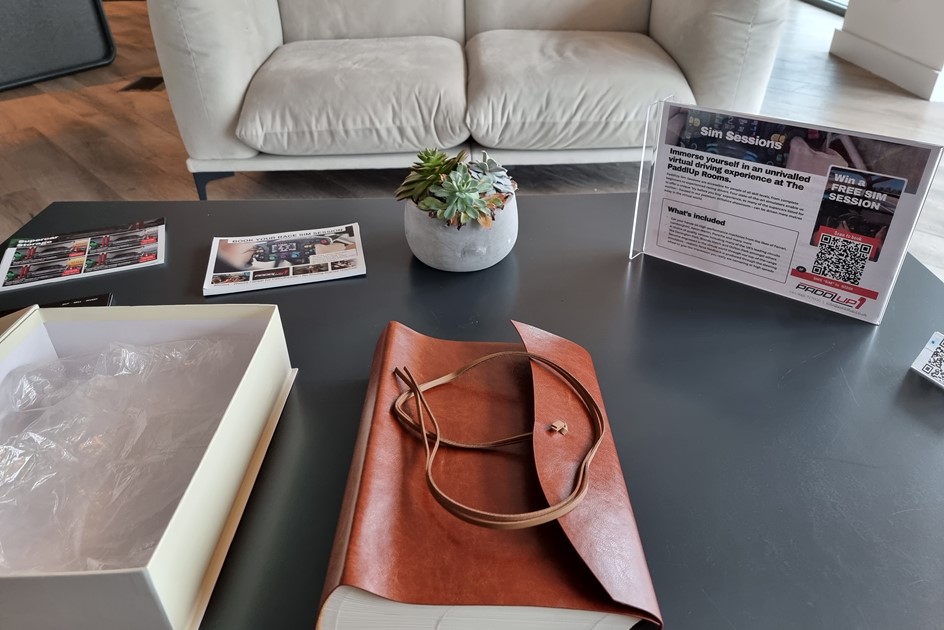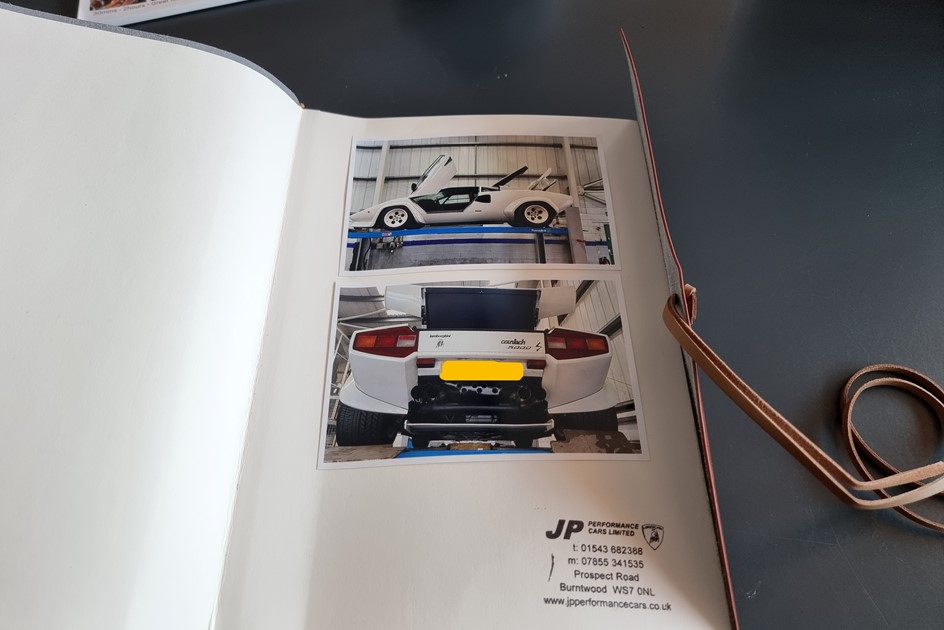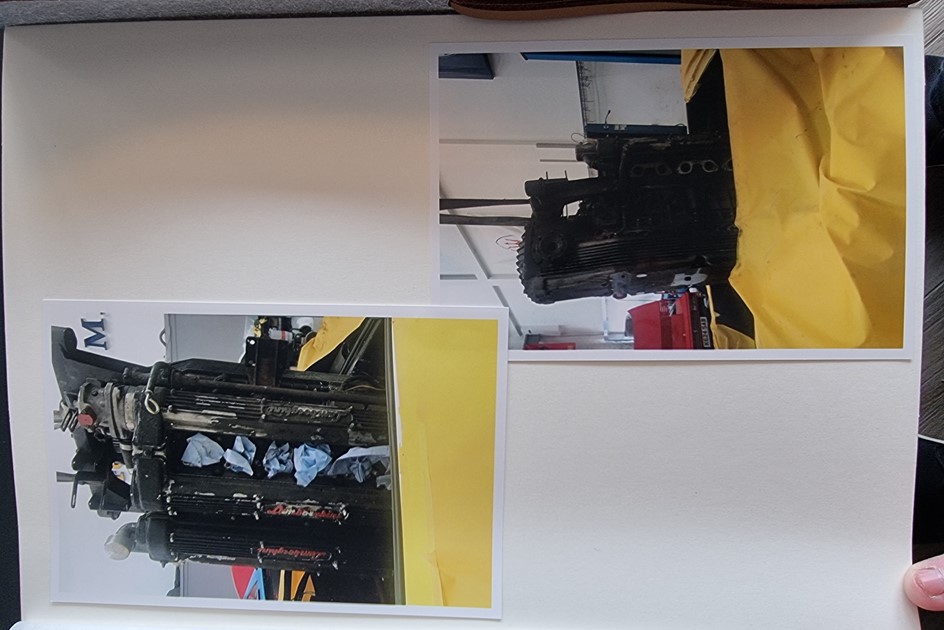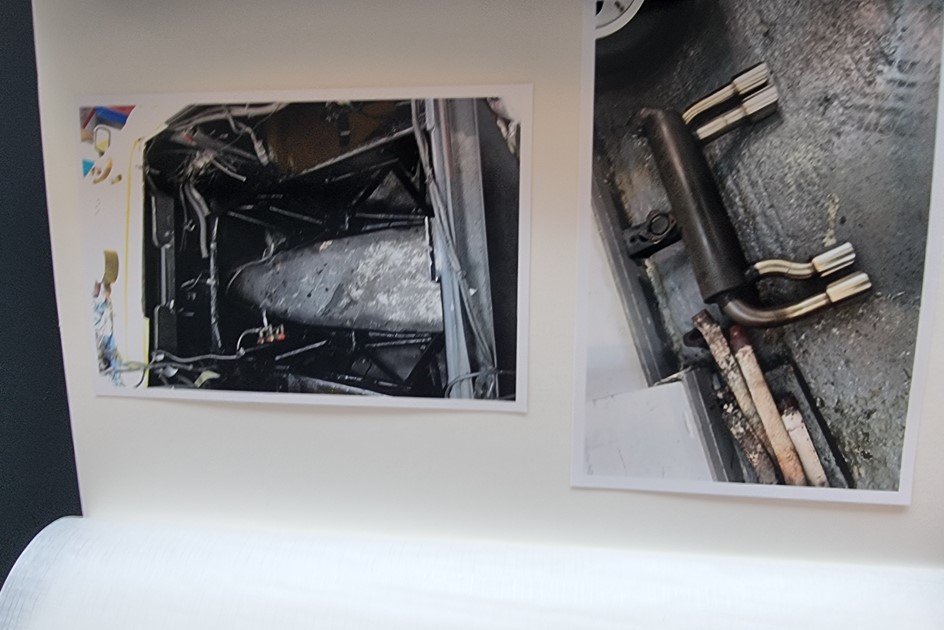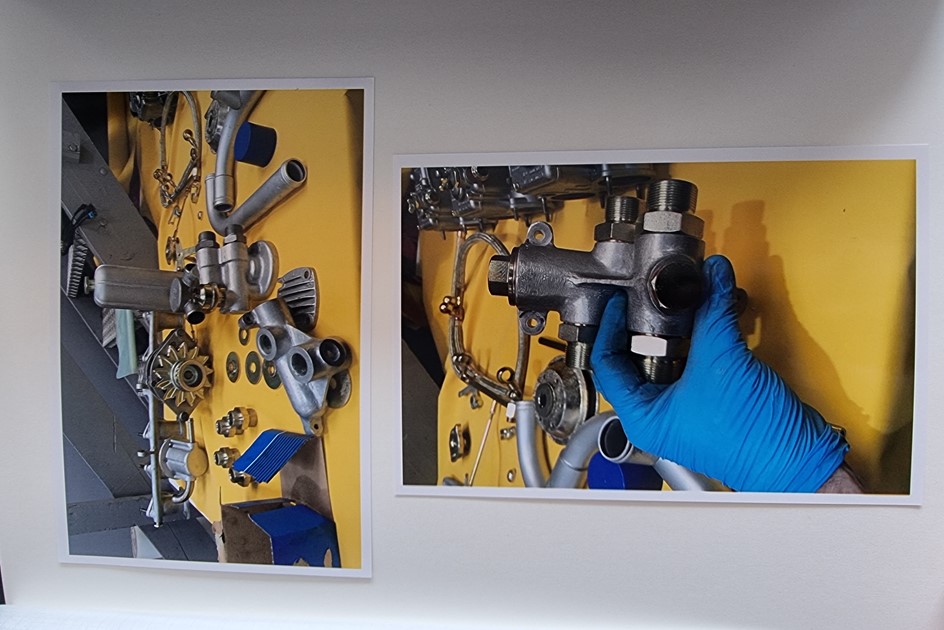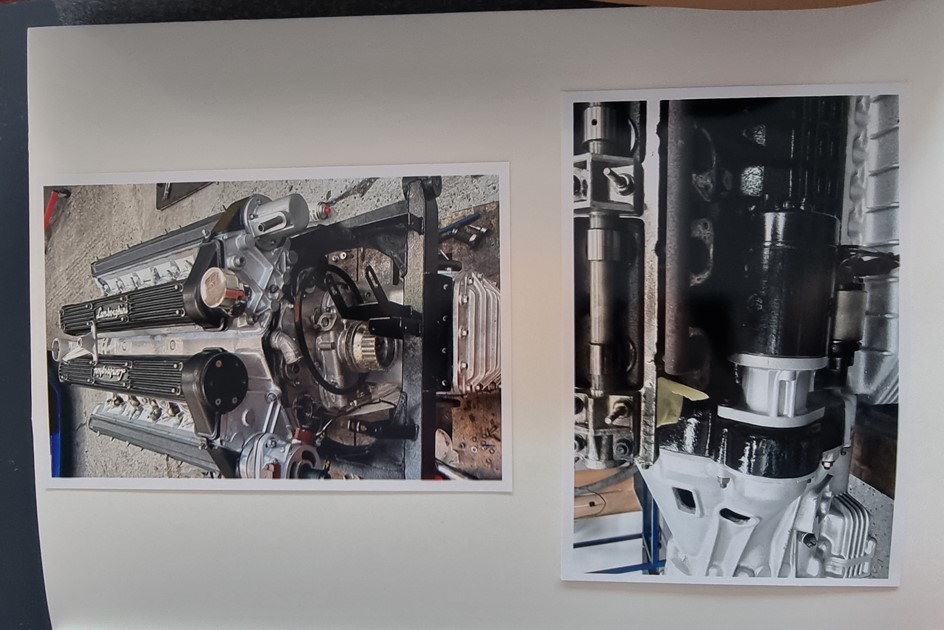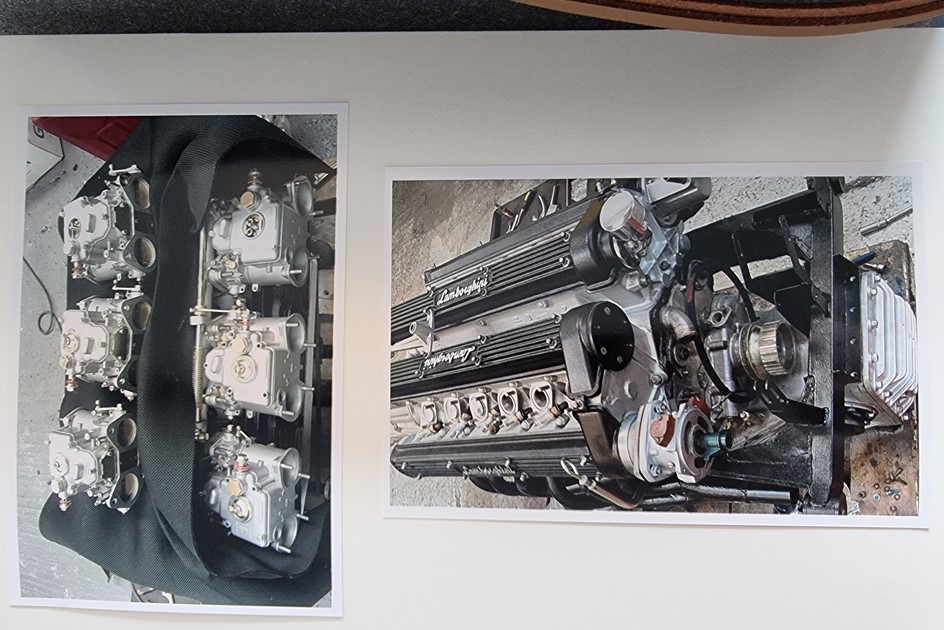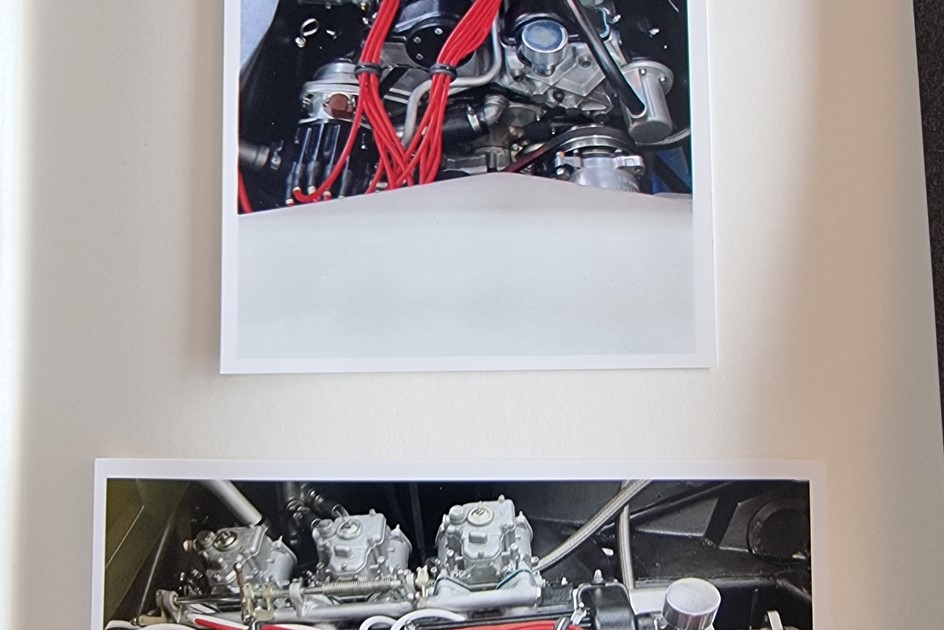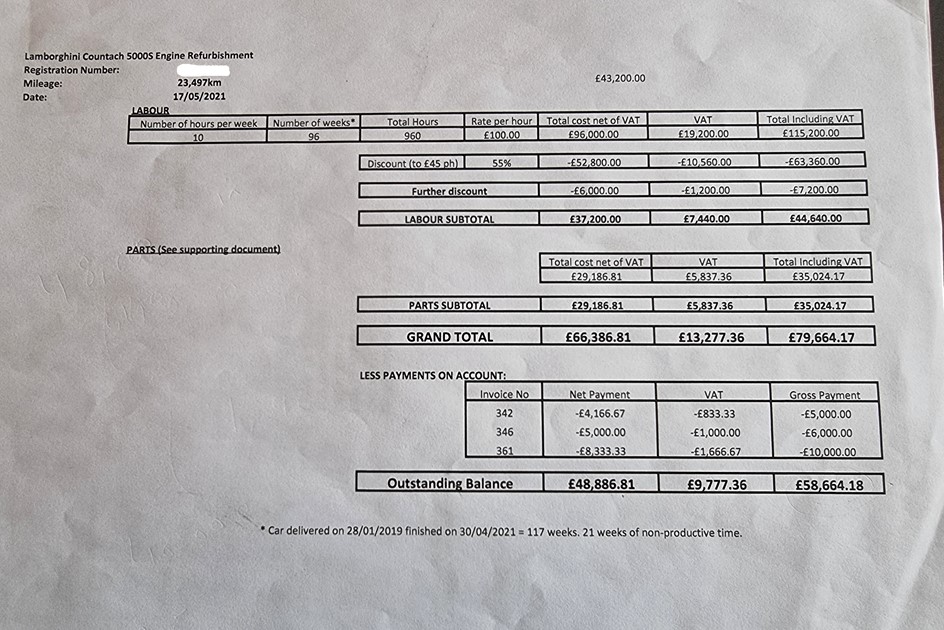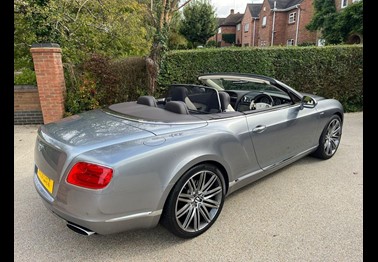1982 Lamborghini Countach 5000 S
Offer the best price you would like to buy for. Your offer will be automatically rejected if it is not close enough to the seller’s reserve. Offer now
✔️ Desirable and collectible icon
✔️ Engine Bay Restoration £80,000
✔️ Iconic 'poster' specification
✔️ Very low mileage
Too shy shy – 1982 Lamborghini Countach 5000 S
To this day, no car is more capable to captivate its audience. You could try and ignore it, pretend you haven’t seen it, but you will sneak a glance out of the corner of your eye. The focus of attention for any hedonistic car collector should surely be the blatant, epoch-defining Lamborghini Countach – the mic drop, before there was a mic drop.
If too, you grew up as a car-obsessed child of the eighties, it was likely that you, or one of your mates, had posters of the latest supercars blu-tacked to your bedroom wall. Likely too, that one of them was a white Lamborghini Countach that you may have bought in your local town centre from the flip-through poster rack in Athena.
This was the iconic big hair and shoulder pad supercar which came to define the very word with its wedge-shaped silhouette, wide-hips and vented intakes. It is now those car-loving kids who are old enough and some, affluent enough to be able to own the real thing and values are steadily rising.
If any individual is to be credited with creating this “supercar” from a visual perspective, it is Bertone’s Marcello Gandini. While it wasn’t the first design to suggest that future was angular rather than curvaceous for Lamborgini, Gandini penned a shape that created such a distinctive form it stood out above all other designs of the period and has inspired the future generations of supercar design.
The first prototype of the Countach was displayed at Geneva Motor Show in 1971 and was called the LP500. LP for ‘Longitudinale Posteriore’, reflecting its orientation and rear-mid engine positioning and ‘500’ for the intended 5.0-litre displacement of the V12.
The LP5000 S was the model that perhaps epitomised of eighties supercar excess
Two years later in 1973, a further prototype was displayed at Geneva, equipped with the 4.0-litre unit from the Miura. Interest was high and orders were taken, and the first production version was delivered in 1974, called the Lamborghini Countach LP400. The LP400 was nicknamed “Periscopio” for its unique periscope-style rear-view mirror arrangement. The multi-mirror rear-view assembly looked up and backwards through a channel in the roof, since the rear window was all but redundant.
The 5000 S here at PaddlUp in this 1982 example, was initially called the 500 S, but this was somewhat misleading because the new 370bhp engine only displaced 4,754 cc. This increased power over the preceding 4-litre engine by 50 bhp. Breathing through six Weber 45 DCOE carburettors, the displacement was 500cc greater than that of the LP 400 S. The most noticeable change was not the power, but how it was delivered, arriving 1,000 rpm earlier than its predecessor. The body kit got larger and Lamborghini added the legendary rear wing. Incredibly, the iconic rear wing was not added in the production hall but in the car park, as the Countach was not homologated with one fitted. But the distinctive feature of the LP5000 S remained the flared wheel arches, which housed the widest wheels ever fitted to a production car.
In total, only 323 Countach 5000 S cars were produced. The first 20 cars were fitted with Campagnolo Cast Magnesium wheels but these were replaced by these Ozzeta Electron units.
The LP5000 S was the model that perhaps epitomised of eighties supercar excess, with its wider and deeper skirts and the optional rear wing which today is seen as the sweet-spot of the Countach lineage and can command a collector’s nostalgia premium for all the eighties poster kids turned collectors.
This 1982 (83MY) production Countach LP5000 S was delivered in 1983 to a gentleman in Italy. It left the Sant’Agata Bolognese factory finished in the highly desirable combination of Rosso over Bianco. Later in the 80’s it was subsequently sold to a gentleman in Austria who changed the interior to the more practical nero and rosso. In the 1990s, the Lamborghini left Europe and was exported to the United States where a larger diameter sports exhaust was added as well as a lower 'diffuser' spoiler to counteract any front axle lift created by the rear wing as was the fashion of US owners. In addition, a 'injection' style engine cover was added, however the car remains with its six Weber carburetors in place. By 2014, the car had returned to Europe and in March 2014 the exterior colour was changed to Bianco by the Supercar Workshop in Harlow.
Later in October 2014, the car was made famous being a star of a fledgling social media when it ran out if fuel on Tower Bridge bringing both sides of the bridge - including a large part of the City of London - to a standstill.
On the 28th of January 2019, the previous owner entrusted the services of supercar specialists JP Performance in Staffordshire to carry out a full engine bay restoration on the car. Initially, this began with an engine compression test which returned a healthy reading of between 177-180 psi across all 12 cylinders. With no need for any internal engine work the focus was moved to the presentation. The engine and transmission were removed from the car allowing for a complete restoration of the engine bay, including the chassis. All ancillaries were refurbished, including all six Weber carburettors.
The work was completed on the 30th of April 2021 having been subject to 96 weeks and 960 hours of labour, totalling nearly £80,000. This is supported by documentation and images taken throughout by JP Performance and supplied with the car - Viewing is highly recommended.
Fund your passion....
Overview
Exterior
Interior
Documents
You may also like...
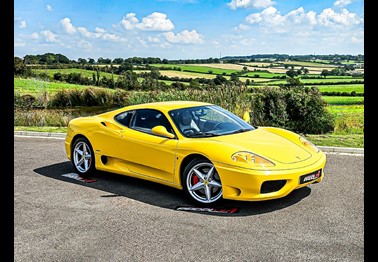
2001 Ferrari 360 Modena F1
𐃏 LHD ⏲ 5,200 miles
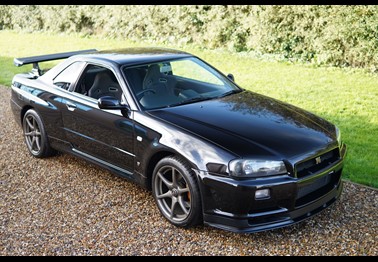
1999 Nissan Skyline R34 GT-R VSpec
𐃏 RHD ⏲ 74,744 miles
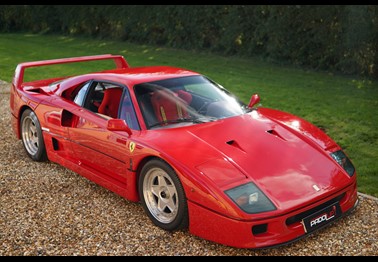
1992 Ferrari F40
𐃏 LHD ⏲ 12,250 miles


